Egypt, Part 12: Across the Desert into Present-Day Luxor
— Egypt — 8 min read
31 May - 4 June 2011
After my visit in Kharga, I had one last section of the Oasis Route through the desert to cover before coming back to the Nile in Luxor. The city is famous for its Ancient Egyptian wonders on display, but that's for the next segment. This photostory documents my time spent with Ernesto, my CouchSurfing host in Luxor, who has a colorful look and life. He's got orange hair, is from Uruguay, lives with a local Egyptian family in New Qurna and volunteers at an animal shelter.
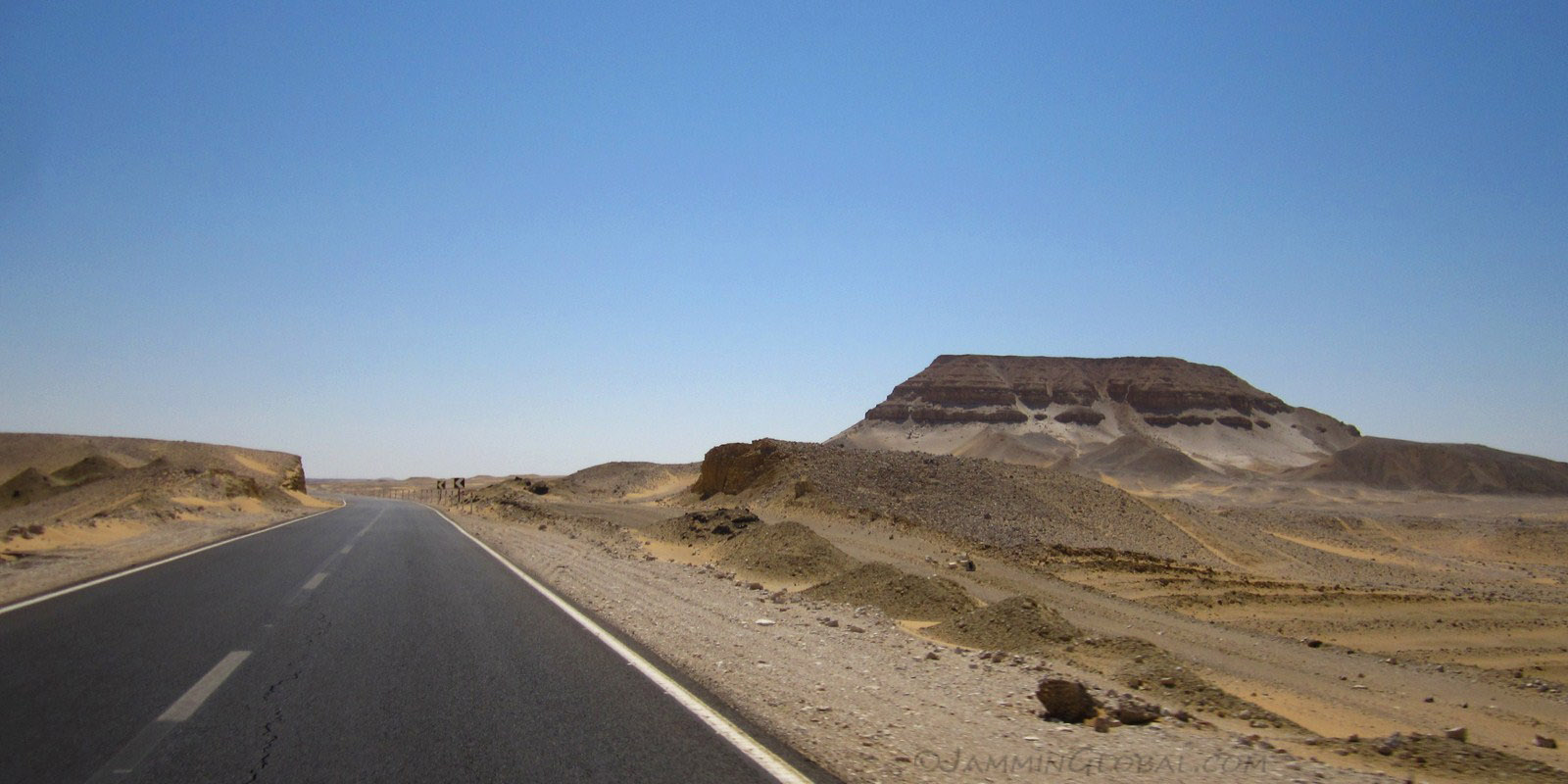
Riding the last section of the Oasis Route across the desert and into Luxor.
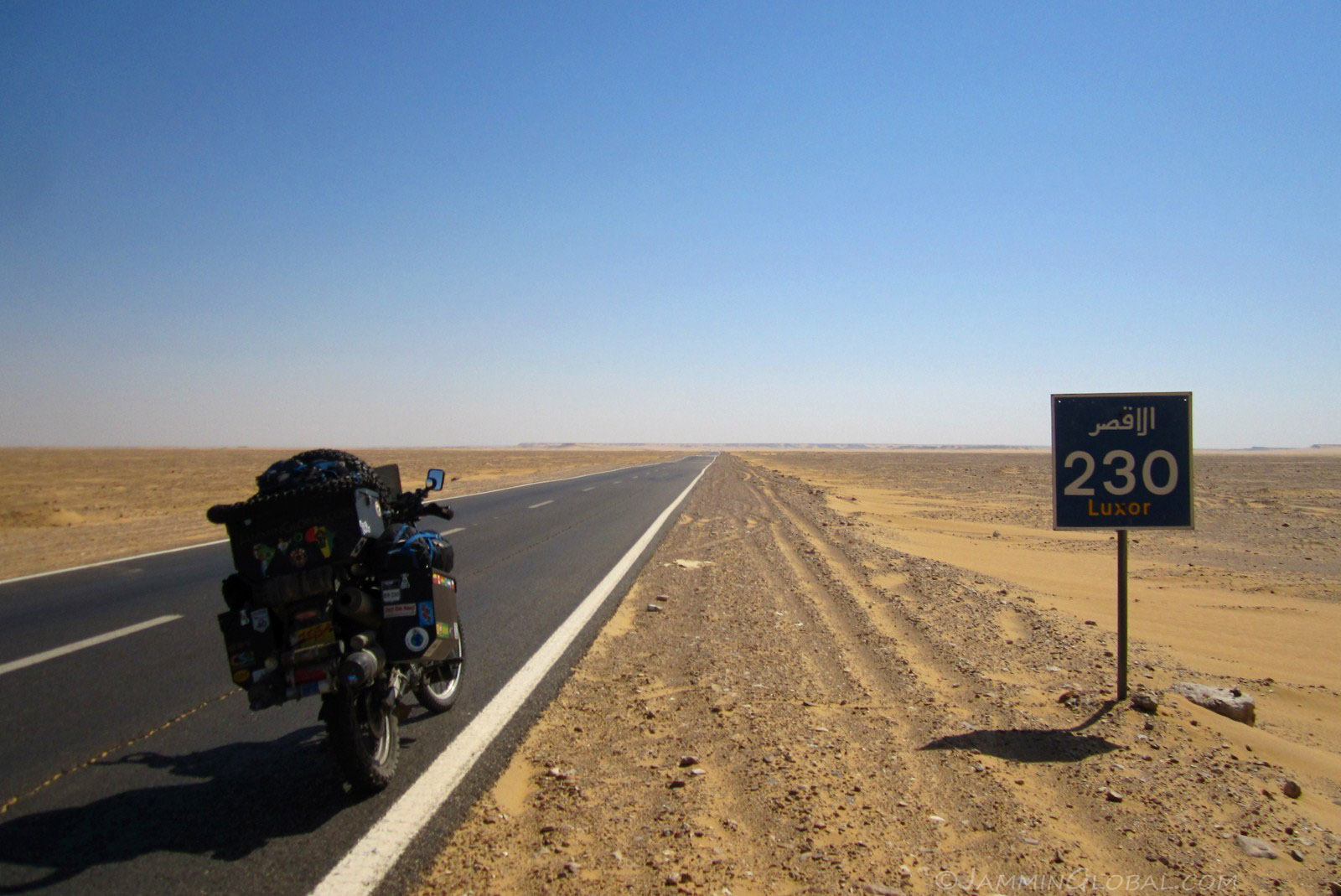
By 9 am, the heat was kicking in. A signpost in the desert. 230 kms (143 mi) to Luxor.
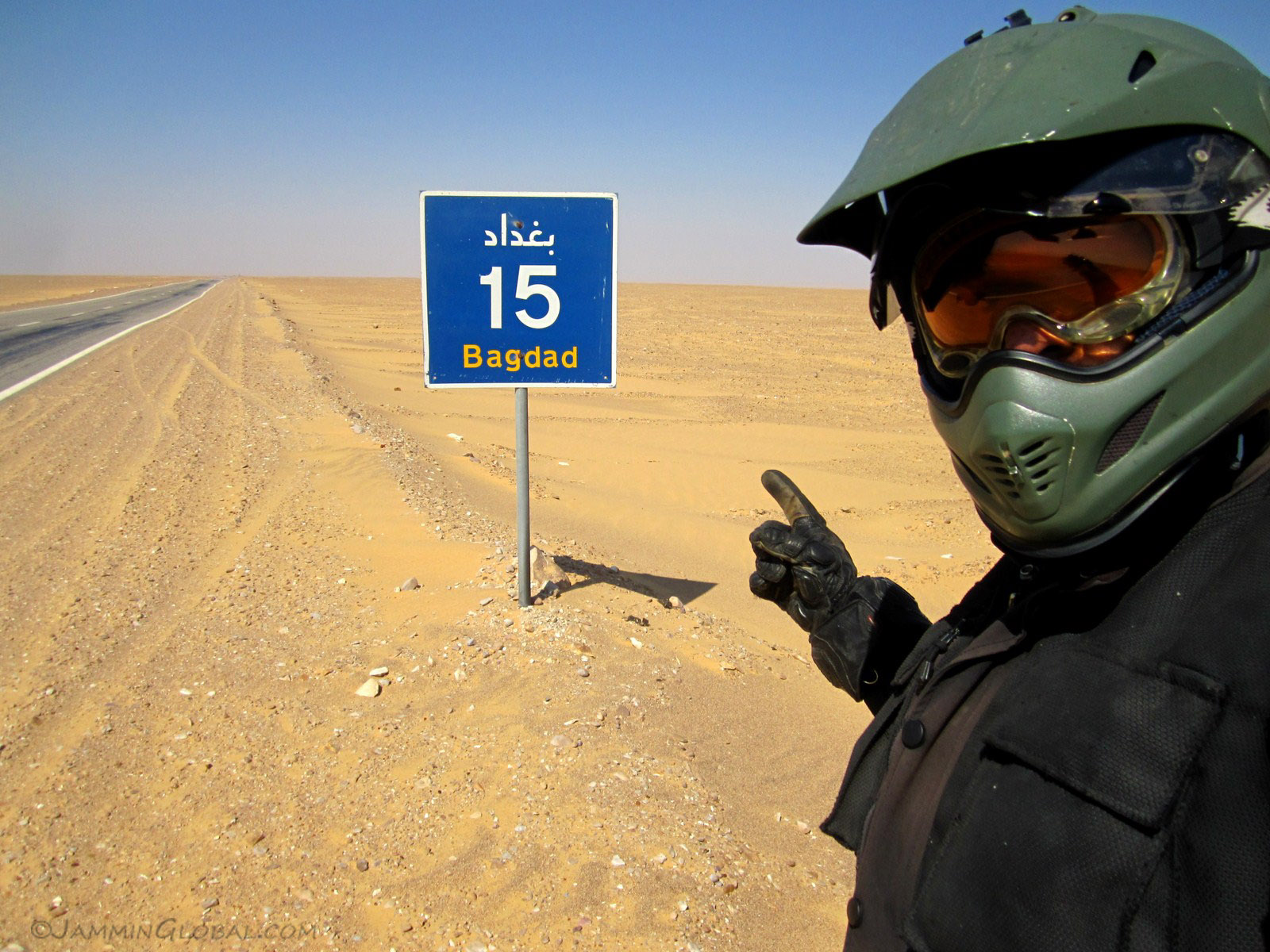
Oops, wrong direction. Just like there's a town in Texas called Paris, there's a town called Bagdad in Egypt. I also saw a sign for Paris a few miles back.
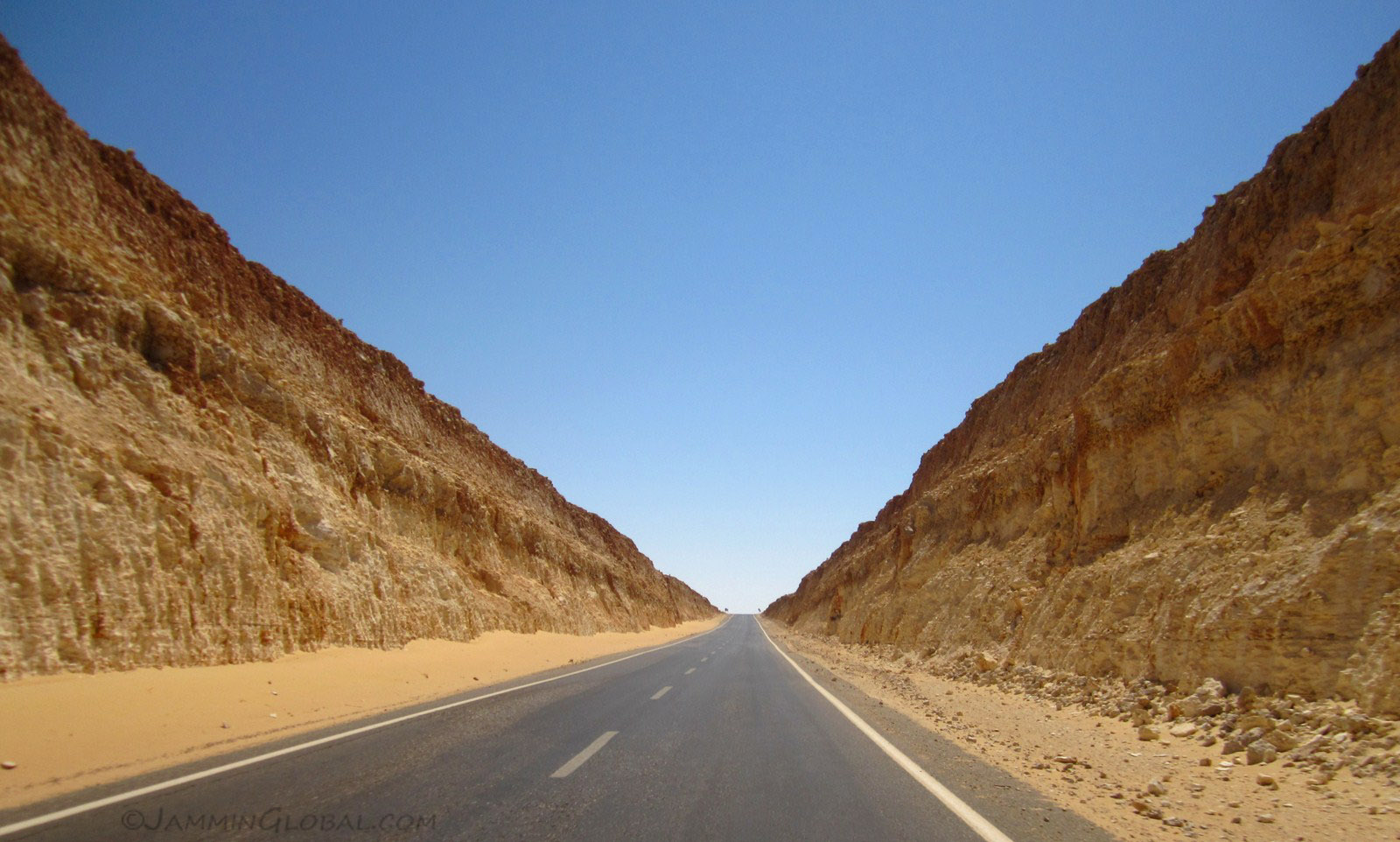
The road being cut into the top of this ridge in the desert. Elevation peaked at 530 m (1,740 ft). It wasn't any cooler up here, but I knew I would be gratified the further south I went, as the cool highlands of Ethiopia beckoned.
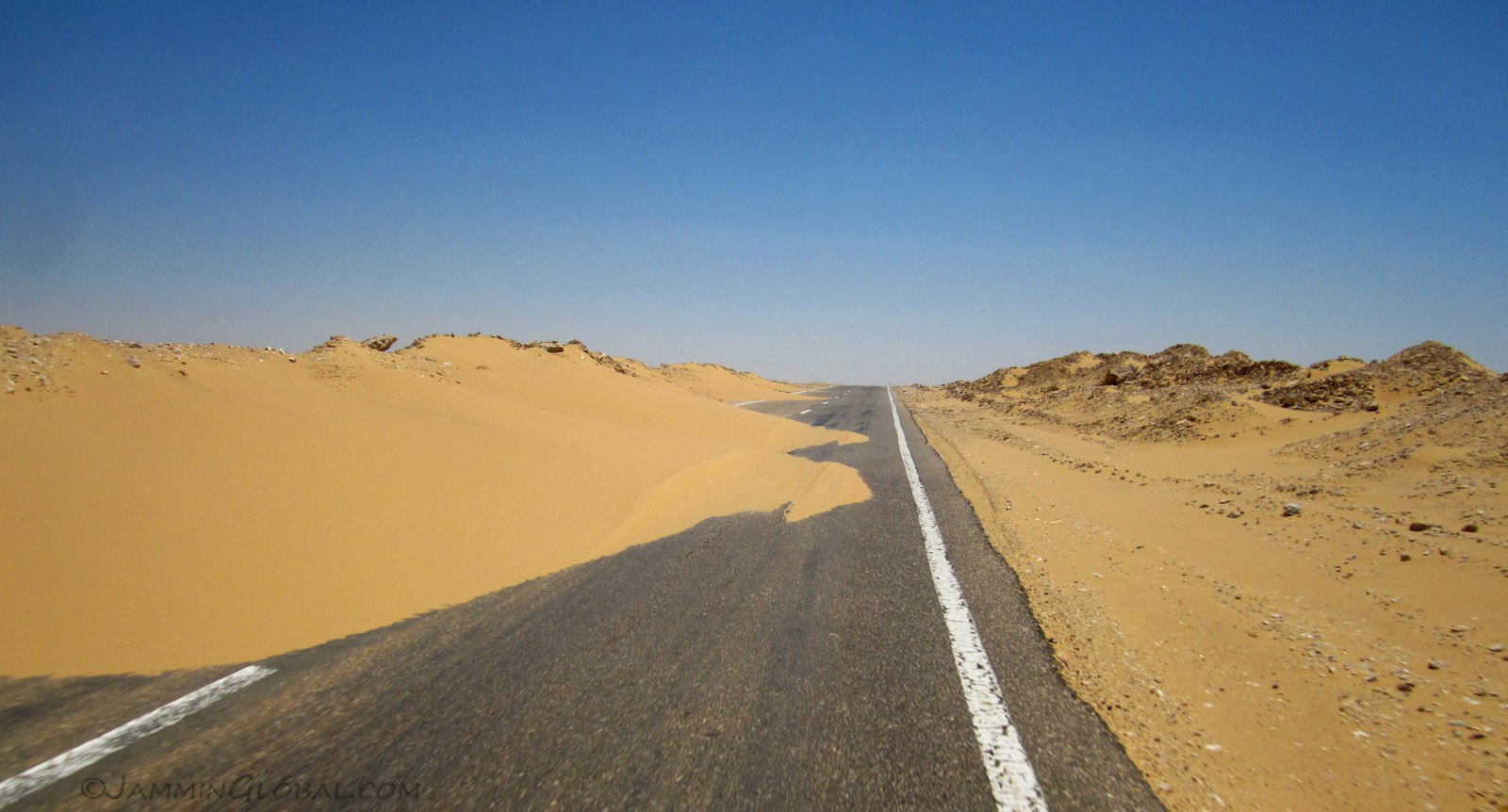
The desert, slowly reclaiming its land. When the humans aren't looking, the sand grains drift across and only when it becomes impassable does the sand get pushed back.

sanDRina enjoying the desert cruise. The smooth, flat roads gave for a high fuel efficiency. I was getting around 25 km/L (59 mpg).
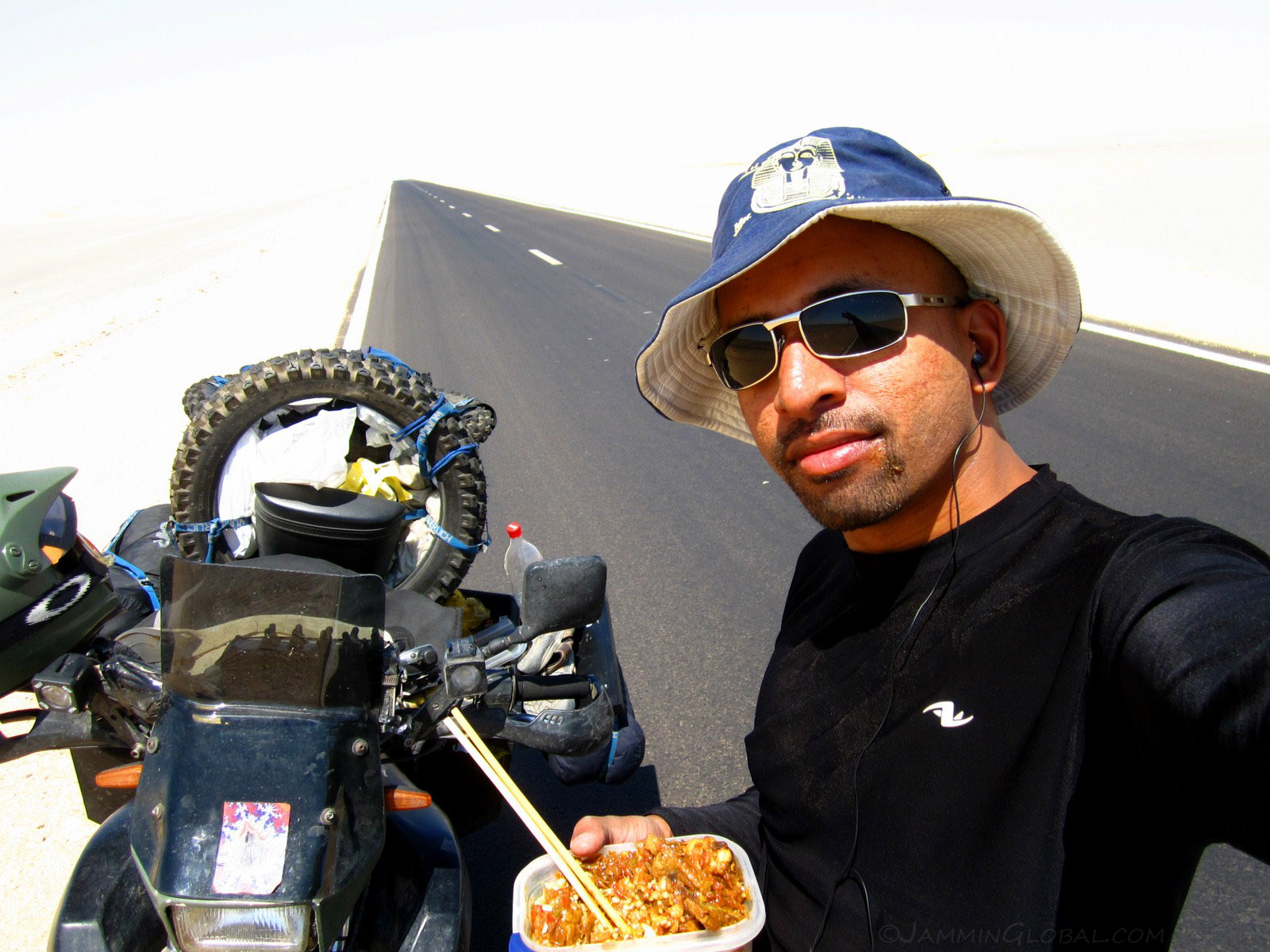
I took some leftover curry that I made from the night before and was taking a few bites at every break. I lost my nice military surplus cloth hat in Cairo and had to replace it with a tourist sun hat. Battling the sun is serious business here and I was drinking a liter of water an hour.
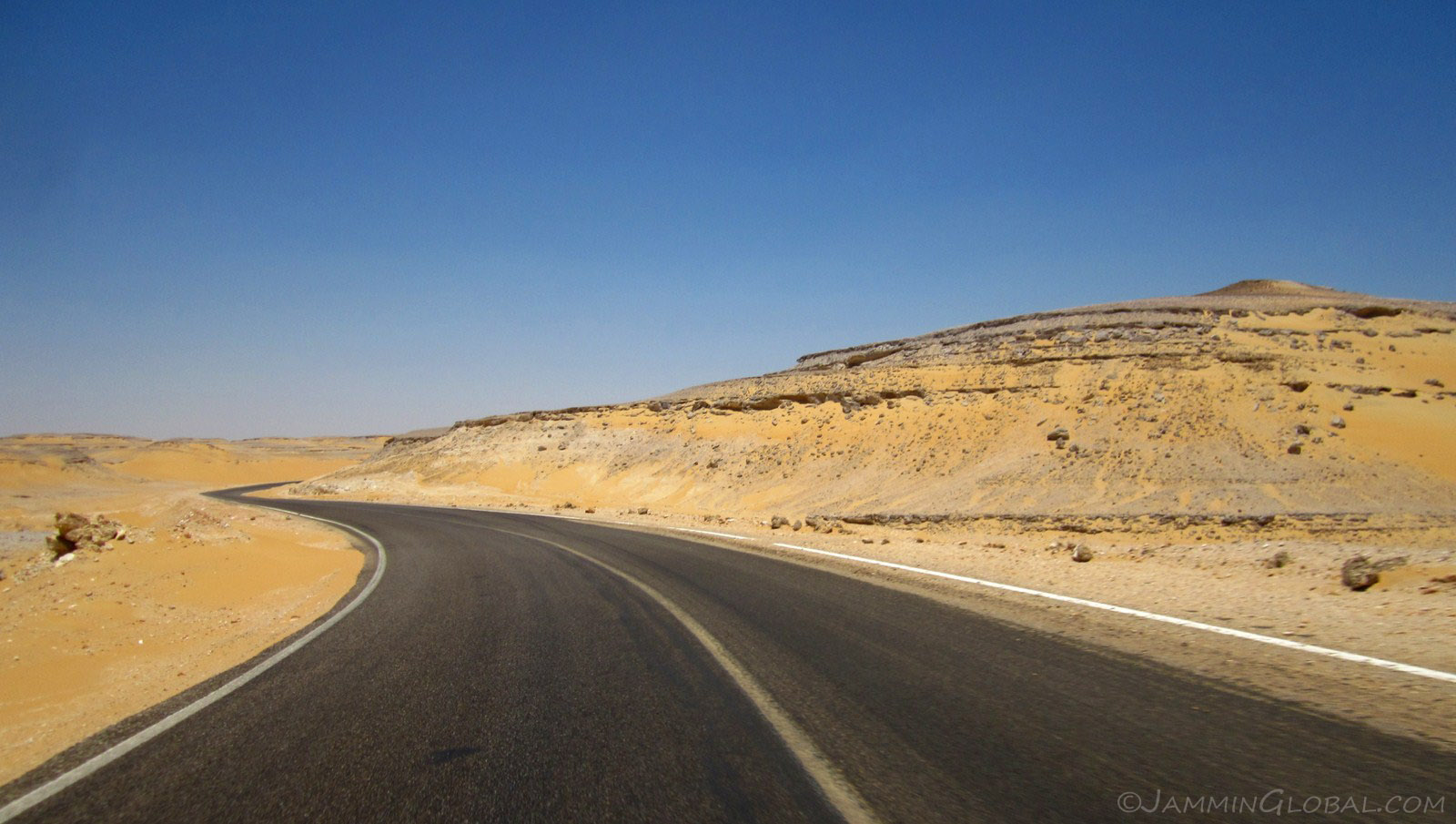
There was a lot of flat, straight riding, but some sweet curves around hills. That S-shape to a curve allows for that most sought-after feeling to be felt, namely, g-forces. I lean left, hanging a bit off the seat into the corner as the front tire countersteers by pointing away from the corner. Then, I shift my body weight to the other side, leaning right and the front tire does its dance of countersteer by pointing the other way. My DR doesn't produce as much g-forces as I'd like with 33 hp, but g-forces they are.
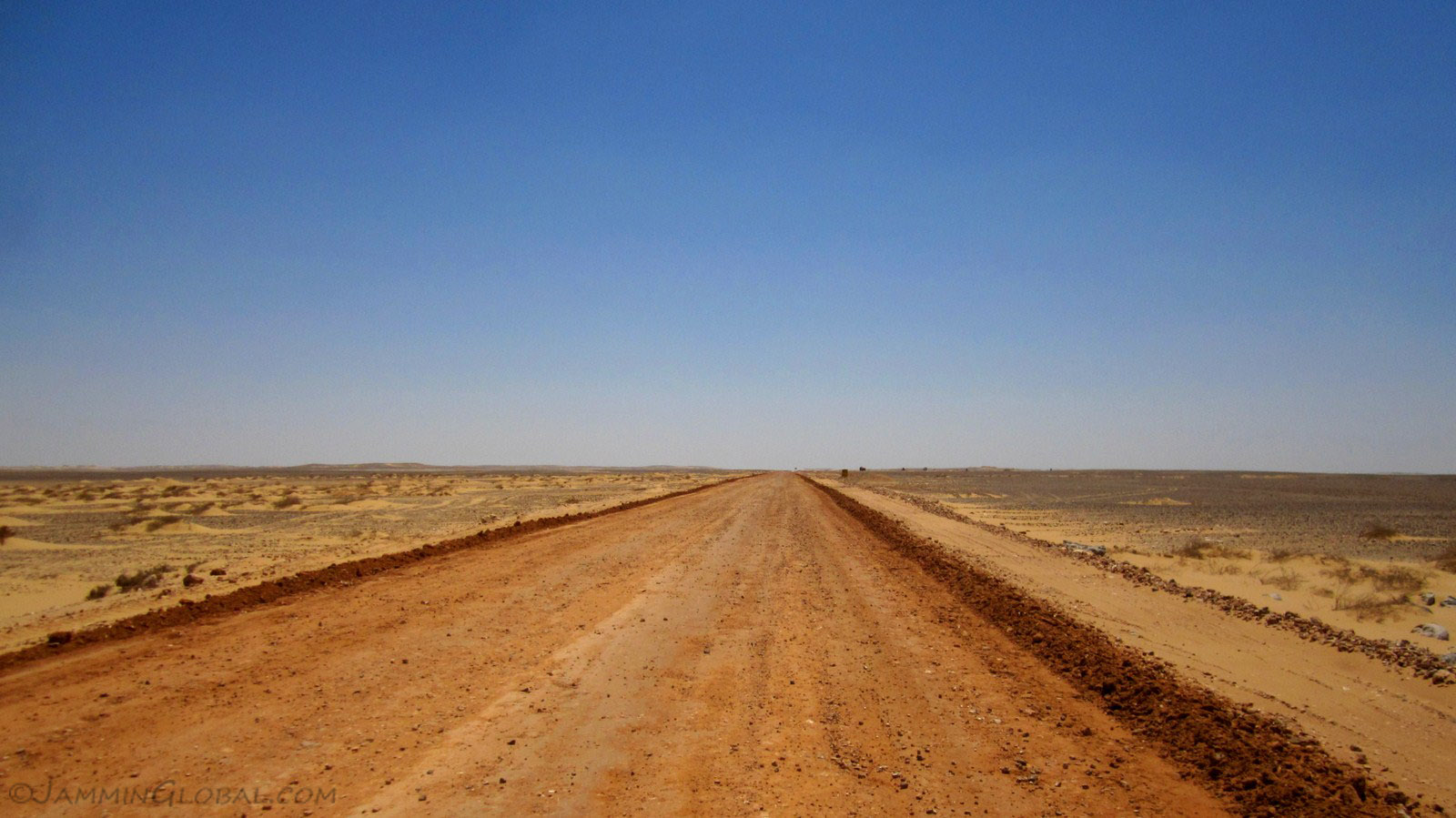
The road was under construction in places, looking like how it looked only a few years back along its whole length. A tarmac road makes for a relatively easy journey and there's something to be enjoyed about being smooth through the corners. On the other hand, an unpaved road requires finesse over a loose surface; dancing with the tires.
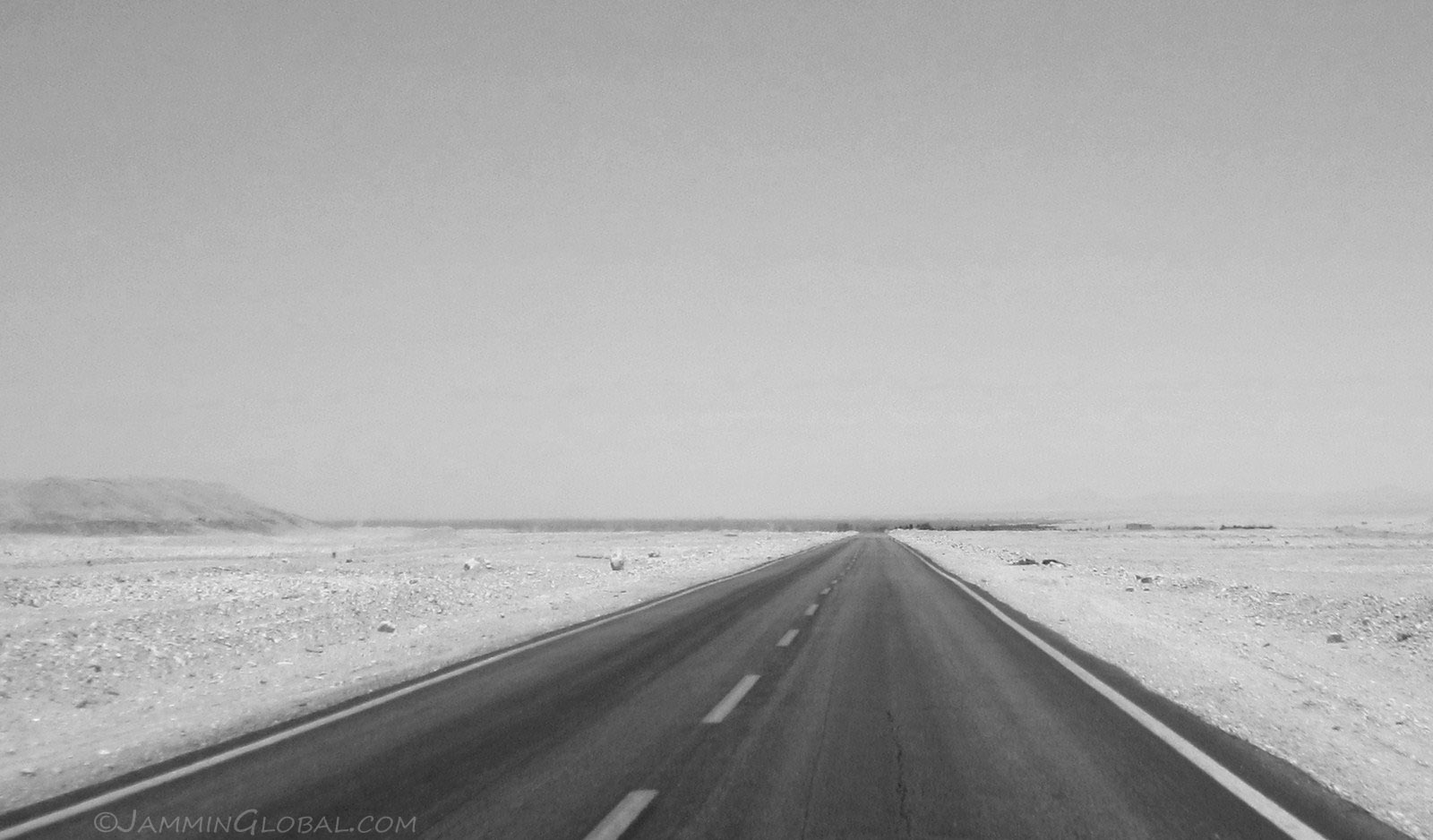
Just past noon, I could start making out a dark smudge on the horizon, growing into a sliver, until at last I could see the trees and greenery fed by the Nile River. That brought an end to desert riding, for now.
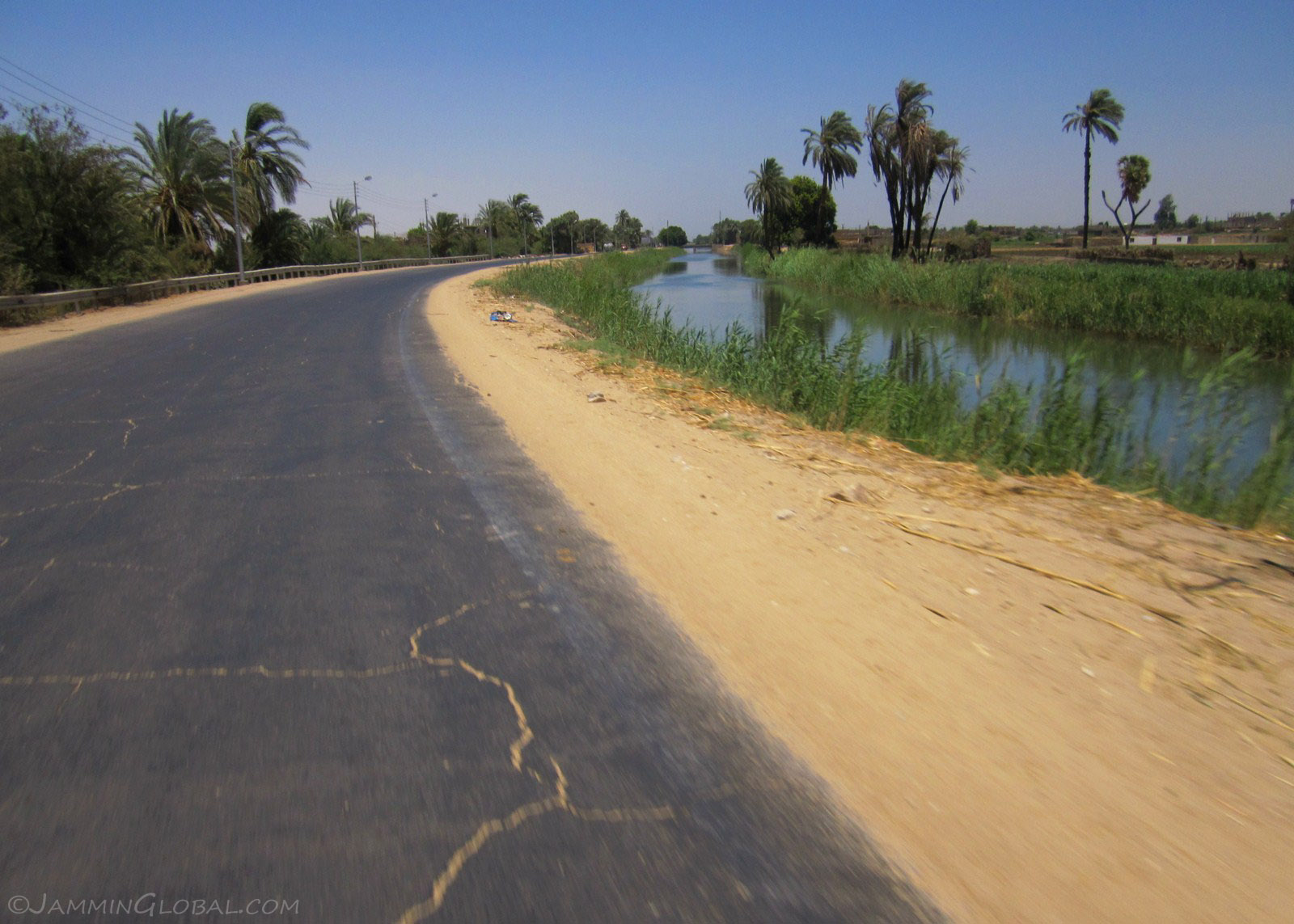
Riding a canal on the west side of the Nile, heading into Luxor.
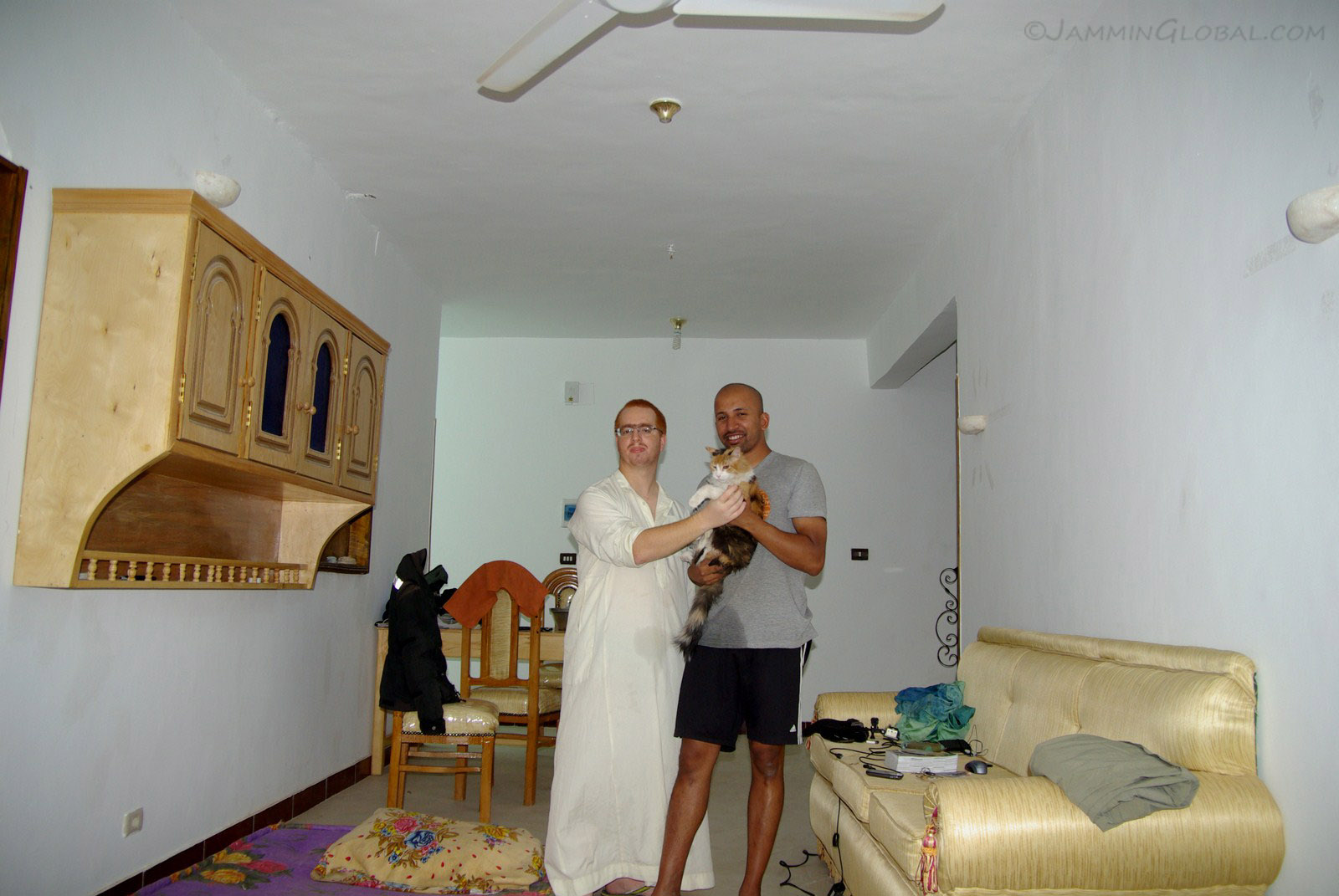
I stayed with Ernesto through CouchSurfing for a few days near Luxor. He's a wonderful character. Firstly, his orange hair stands out. Then his story is really interesting: he's from Uruguay, now living behind the Egyptian family that's taken him in. They are people of Qurna, who lived on top of the tombs of the Valley of the Kings until the government moved them to a new housing project, New Qurna. Ernesto had a contact with them and came back to stay and work. He's a website designer with clients mainly in Spain.
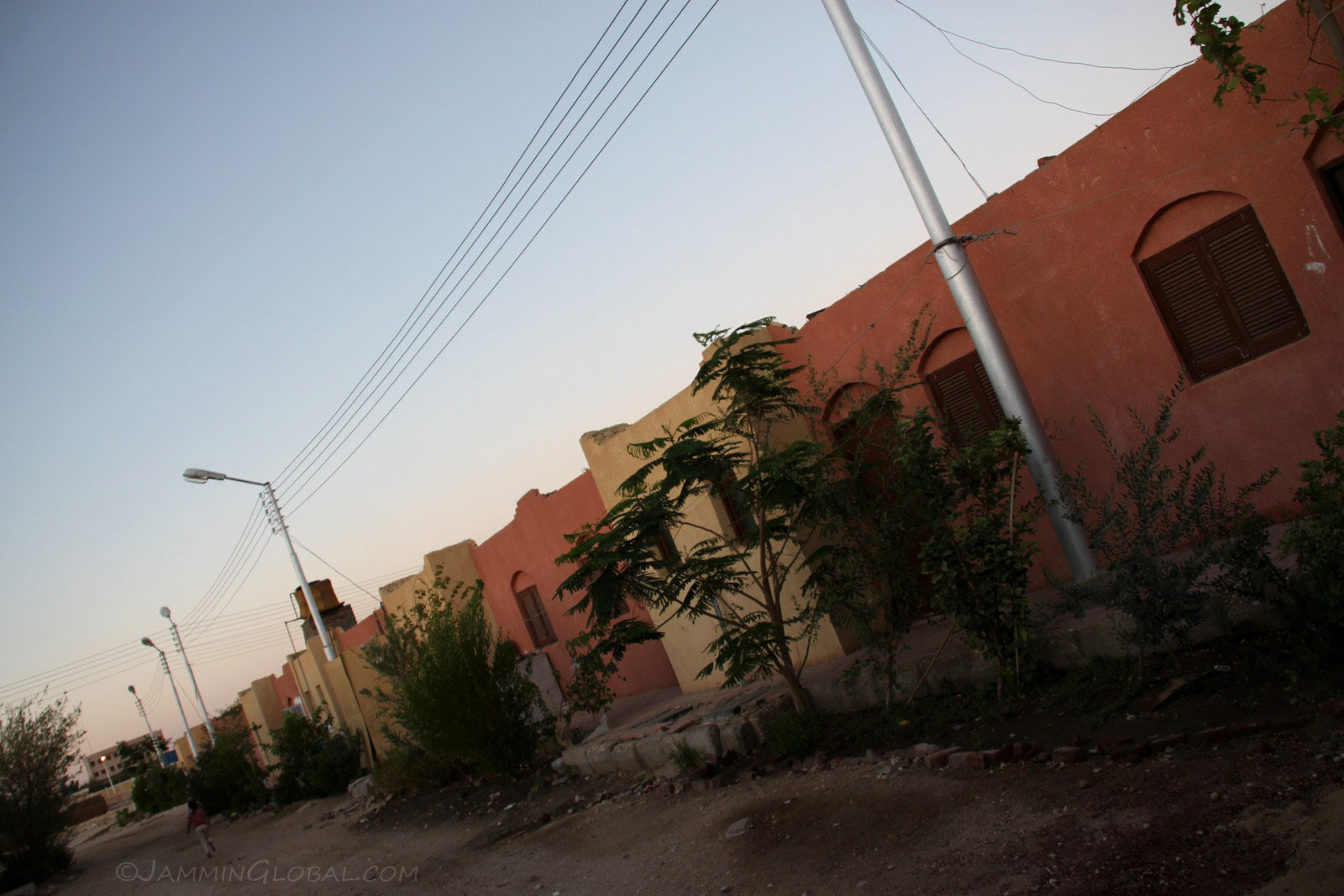
New Qurna, on the northern edge of Luxor. This village was built in the 1950s by renowned Egyptian architect, Hassan Fathy to house the people who were living in the old village of Qurna that was situated on top of tombs from antiquity. The government, namely the Antiquities department, forcibly moved the people from Qurna in the name of protecting Ancient Egyptian artifacts, such as the tombs that were yet to be excavated and the treasures within them. The people of Qurna settled on the tombs in the late 19th century and slowly began to pilfer them and sell antiquities to foreigners in Cairo to make a living. It was a sensitive issue to move them but the claim of protecting cultural heritage seems valid. Their new living area was designed with local and modern features, such as natural cooling with domed ceilings and street lights. Staying here for three days, I heard many stories from Ernesto's local family and friends.
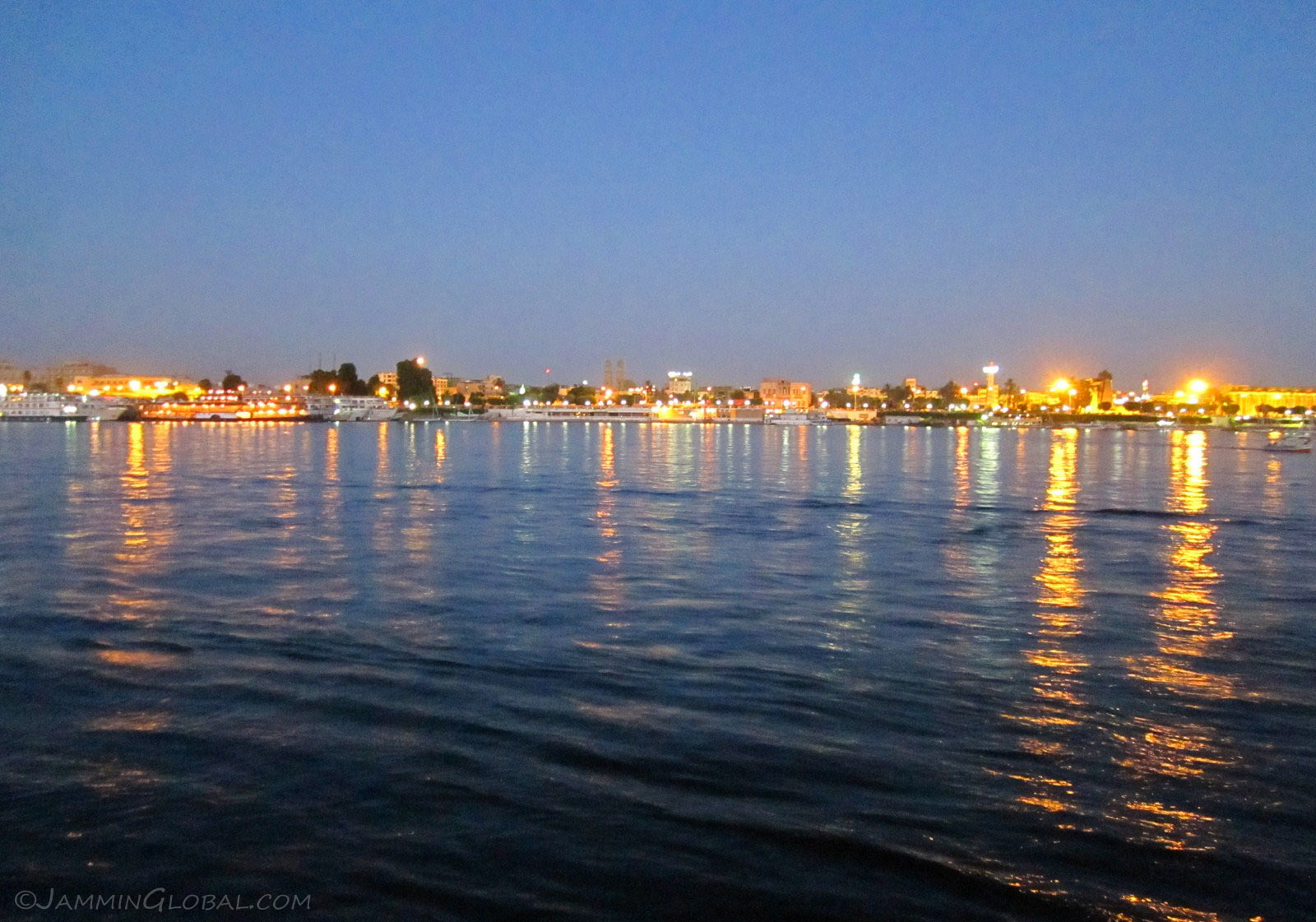
I had come to Luxor to soak in the concentration of Ancient Egypt's wonders. The wonderful thing about CouchSurfing is that Ernesto is an Egyptology student and had tones of information on what to see and what was worth seeing. We crossed over to the east side of the Nile, where the town proper of Luxor is.
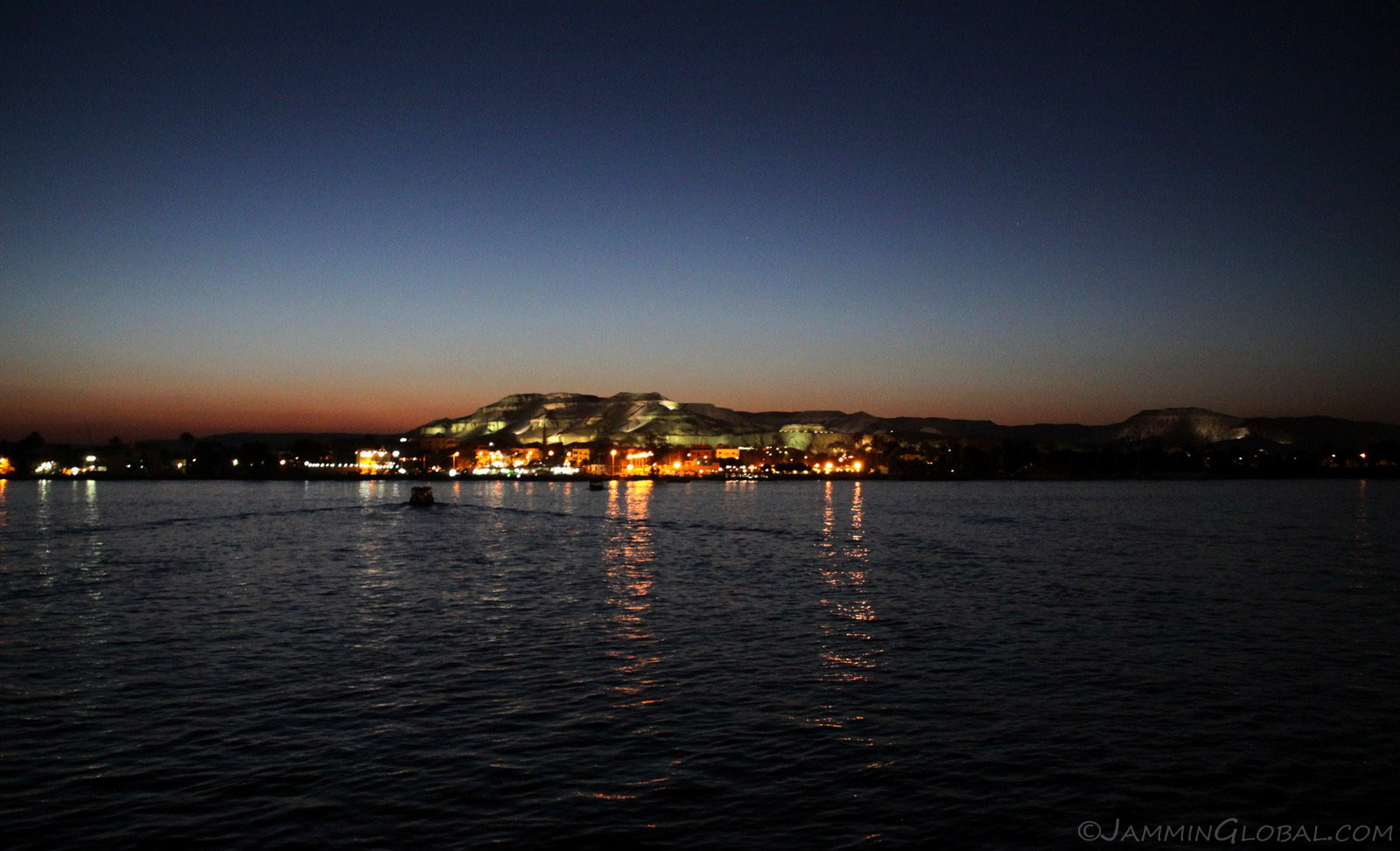
Looking back west at the Valley of the Kings just after sunset. In those valleys, now lit up, lie the tombs of many Pharaohs.
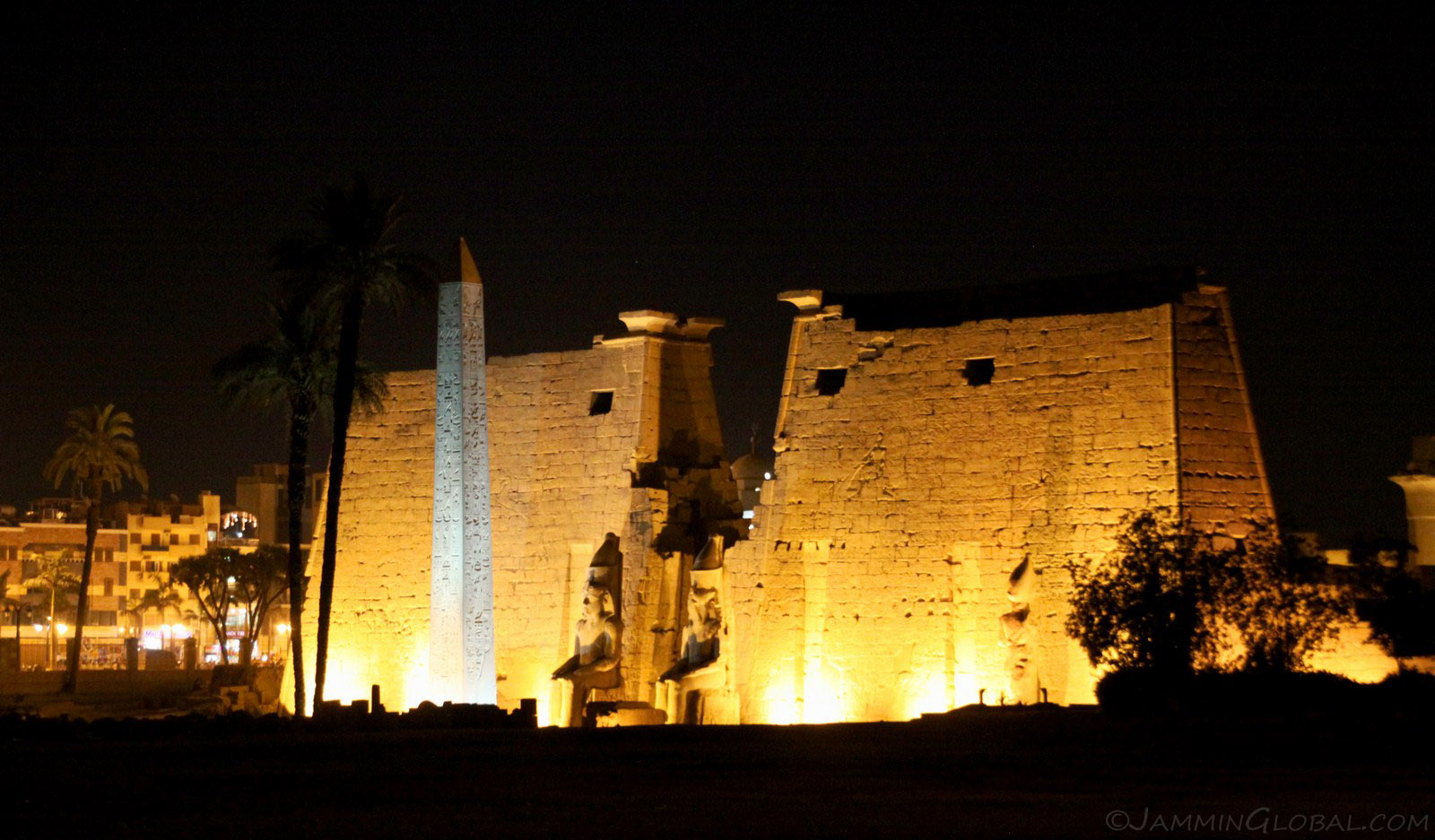
The entrance to Luxor Temple, right in the heart of the modern town. It was built around 1,400 BC and various Pharaohs added to the complex. This grand pylon was built by Rameses II and there are supposed to be two, giant, red granite obelisks at the front. The other obelisk happens to be in Paris, at the center of the Place de la Concorde. It was given to France in 1829 by the rulers of Egypt at the time, the Ottomans. These short-term rulers of this long-lasting civilization felt they had the right to disperse its treasures for their favor.
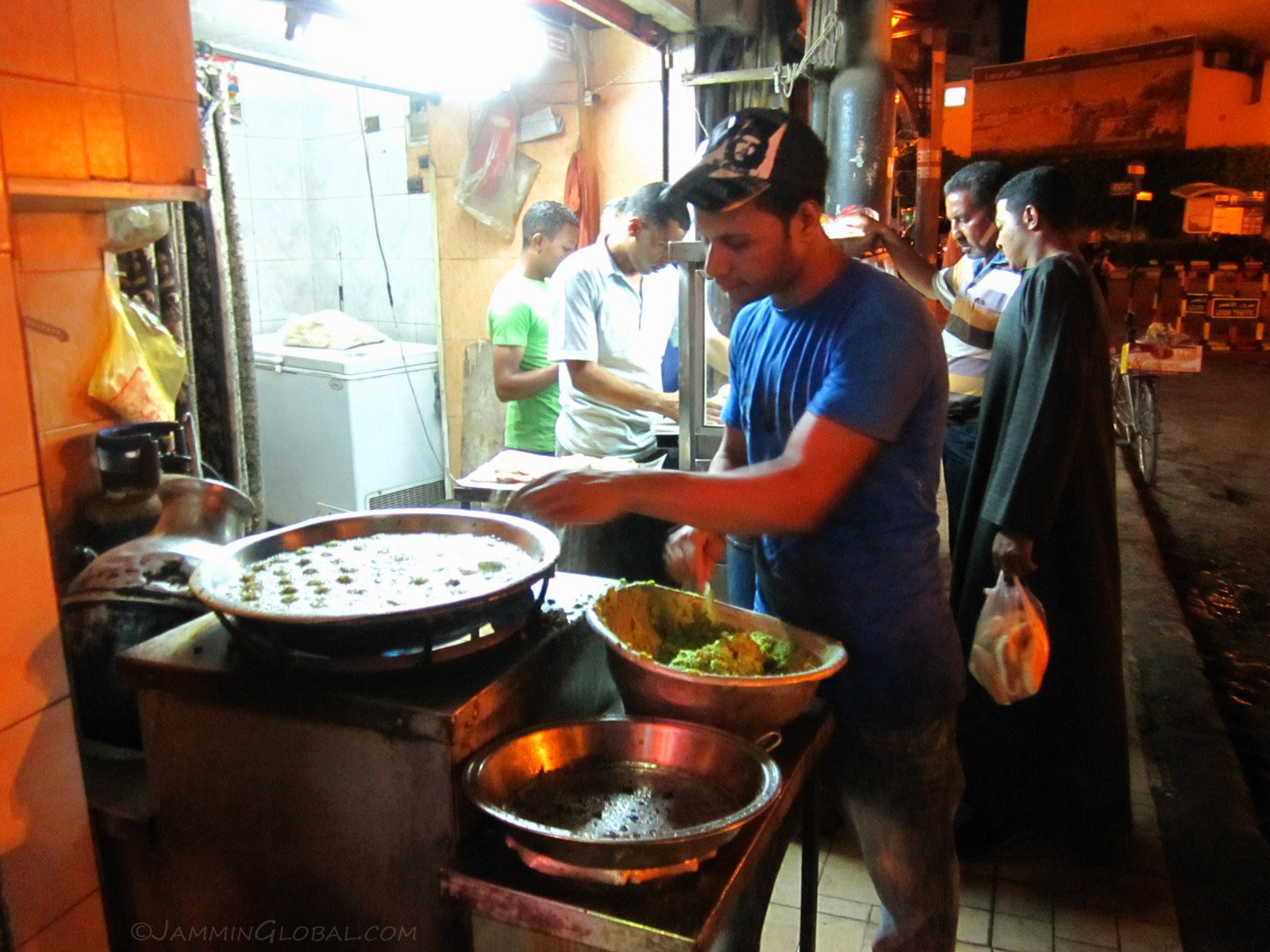
Just behind the grand temple was a busy street with this guy frying up some fresh falafel. Since I would be visiting quite a few tourist sites in the next few days, I went and got an ISIC card (International Student Card) that gave me 50% off from the entrance fees. The LE 105 (\$19) price for the card paid for itself before I left Luxor and I knew I would use it again further south.
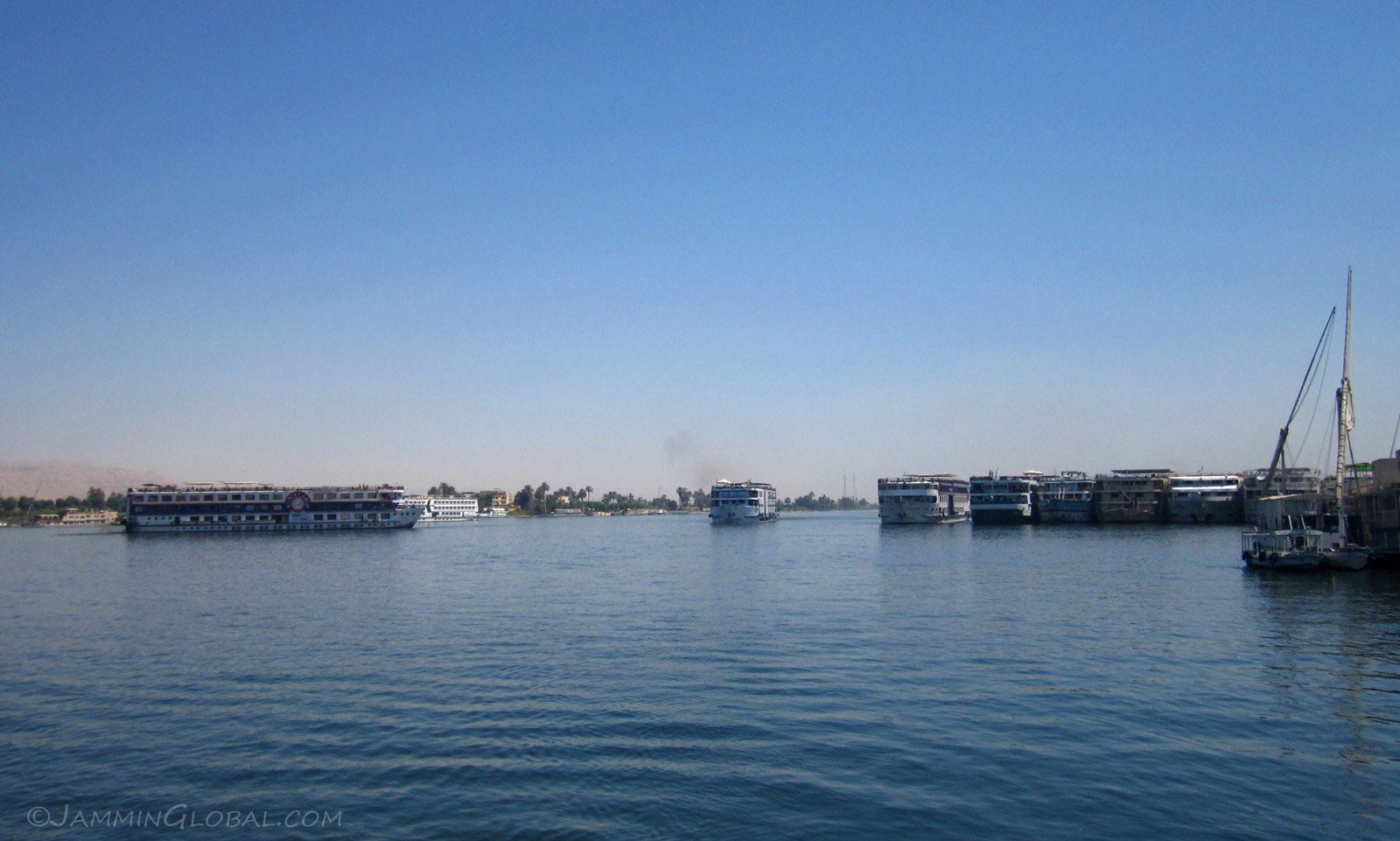
River boats parked up in Luxor, instead of cruising the Nile to Aswan. The reduction in tourist numbers after the revolution had badly affected many businesses that rely solely on foreigners to sustain their livelihoods. Ernesto invited me to come along and see this animal shelter that he volunteers at. We crossed the Nile using the local ferry, which costs LE 0.25 (5¢) for locals and the usual separate pricing for foreigners of LE 1 (18¢). The monetary difference is not an issue, but the government notice at the ticket office that foreigners pay four times the cost bothers me. But this happens everywhere. In India, I remember seeing a temple entrance notice that locals pay 10 Rupees (20¢), while foreigners pay \$10, which is 50 times the difference!
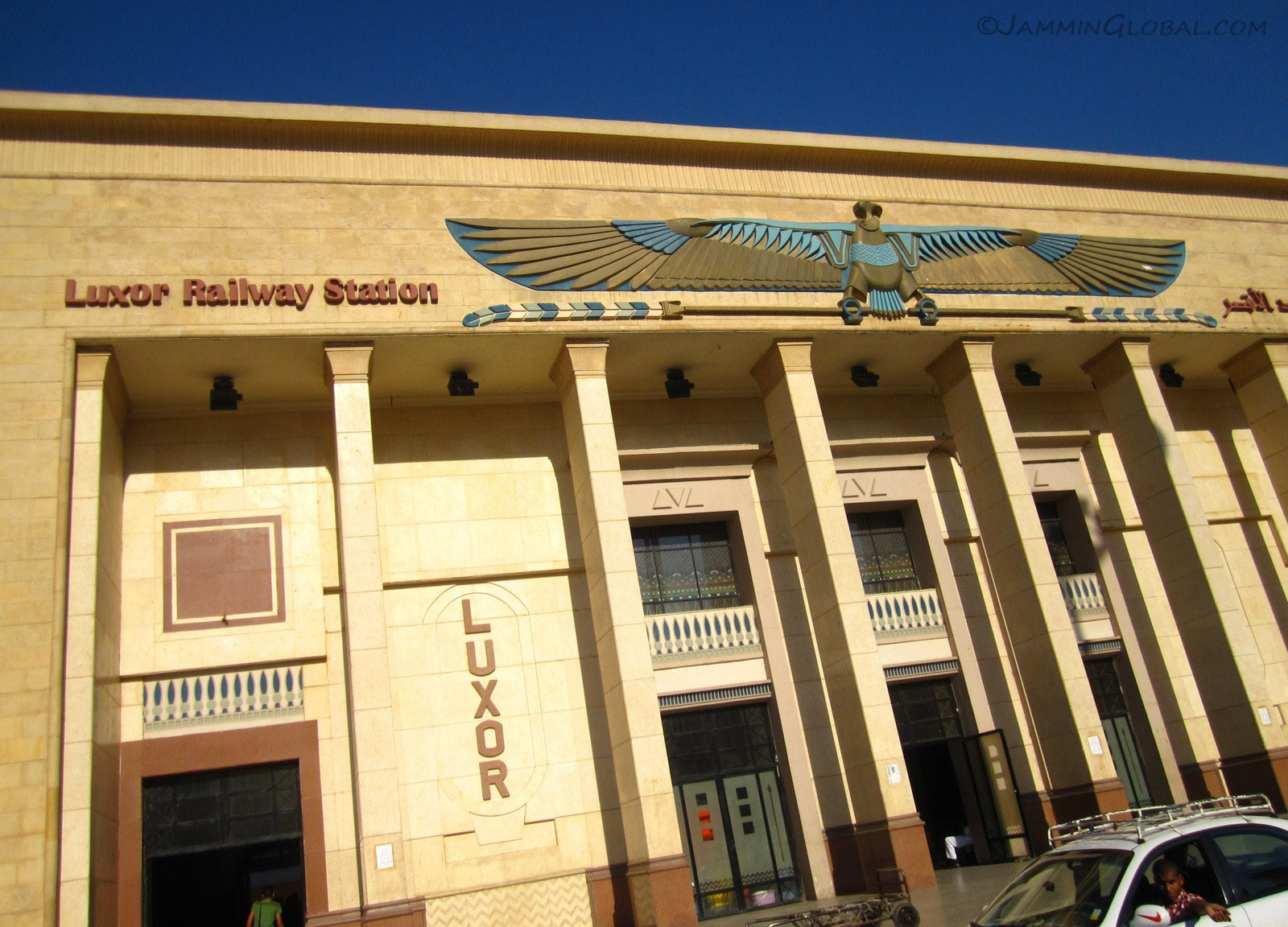
We walked through town and then through the Luxor Railway Station to cross the railroad tracks to get to the other side.
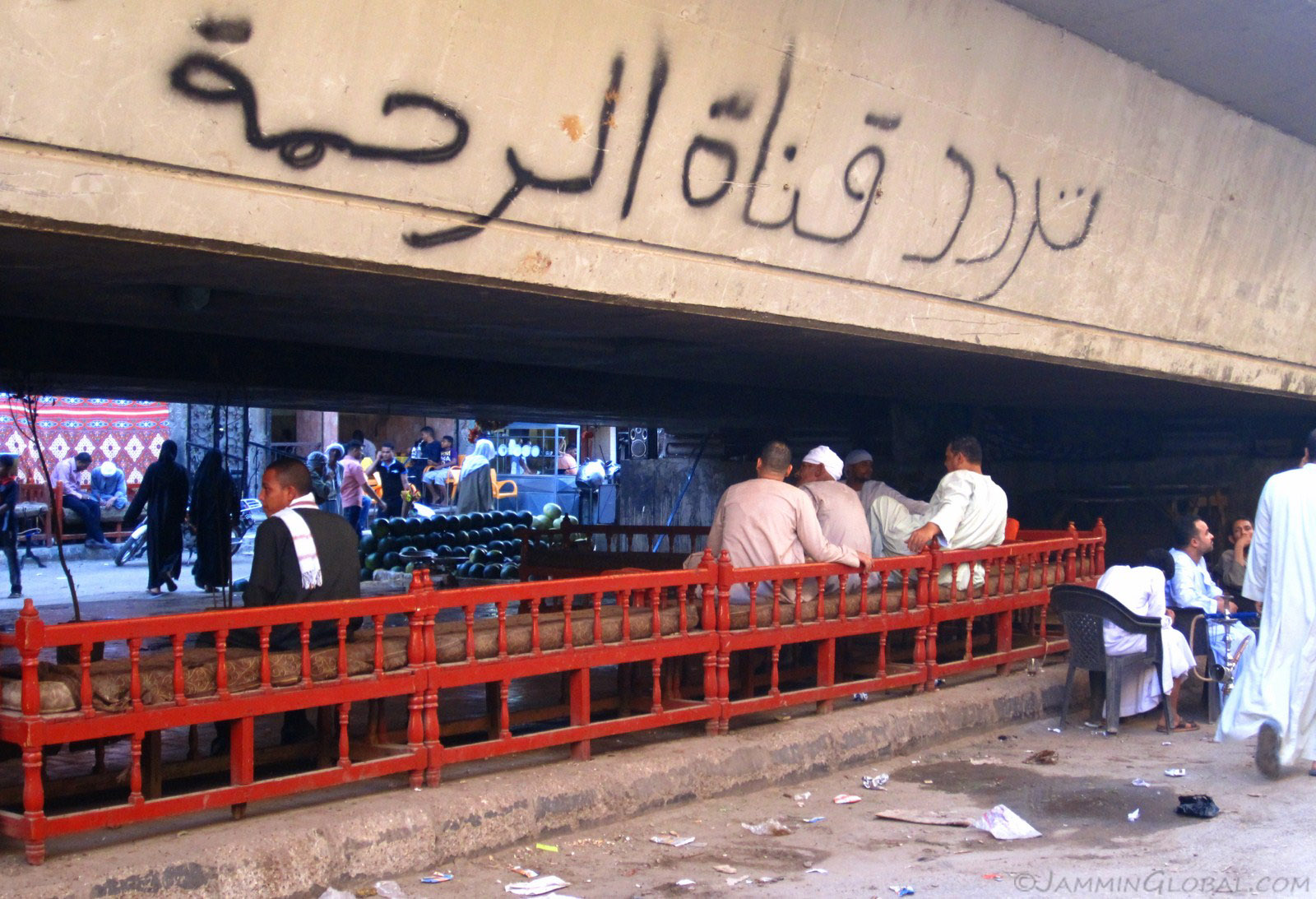
Behind the railway station was a part of the city that's not on the tourist trail of Luxor. A cozy, outdoor cafe under a highway flyover, featuring low ceilings, dim lighting and an excellent vantage point for people-watching.
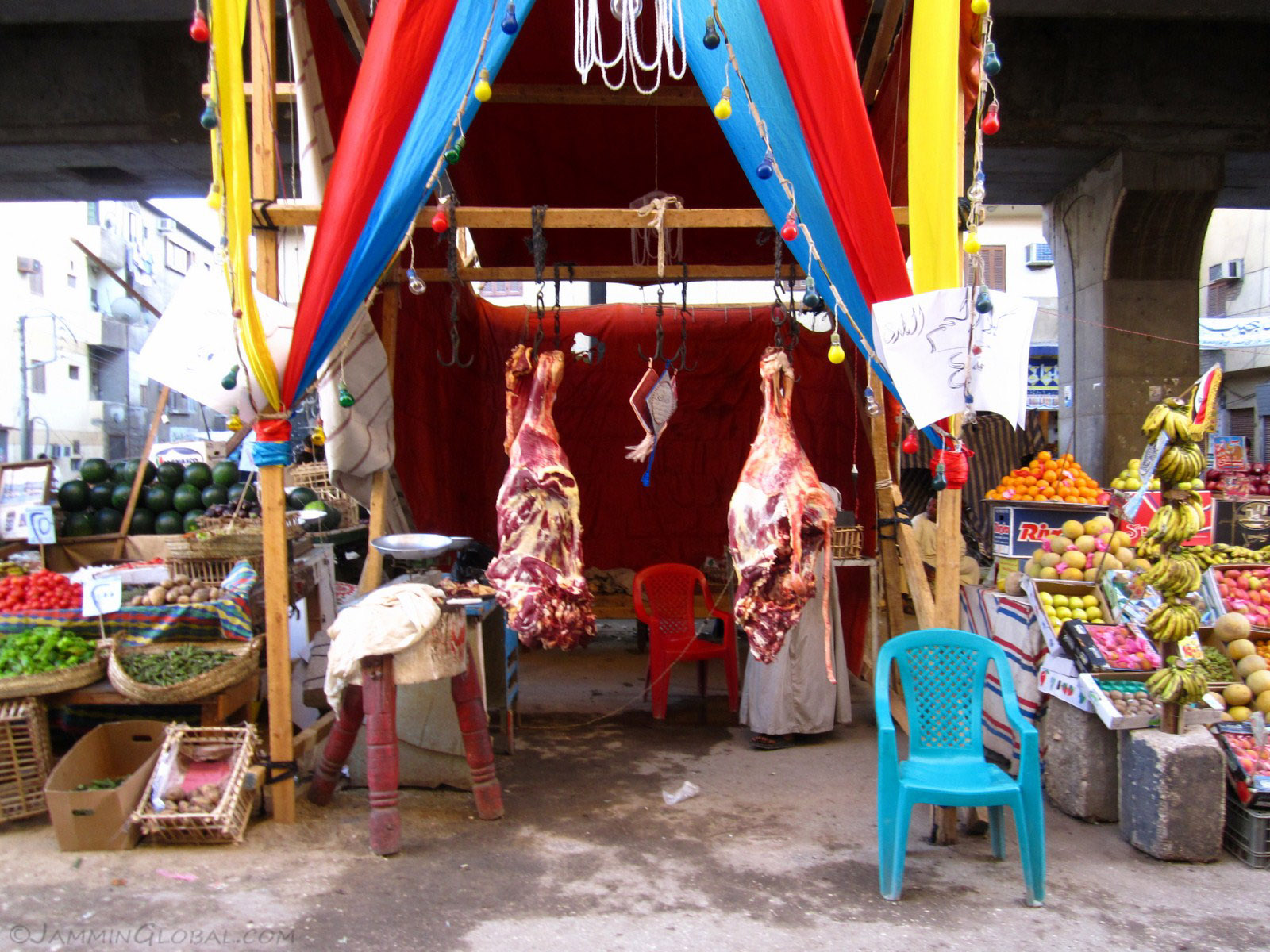
Open-air butchery, sandwiched by fruit and vegetable stands.
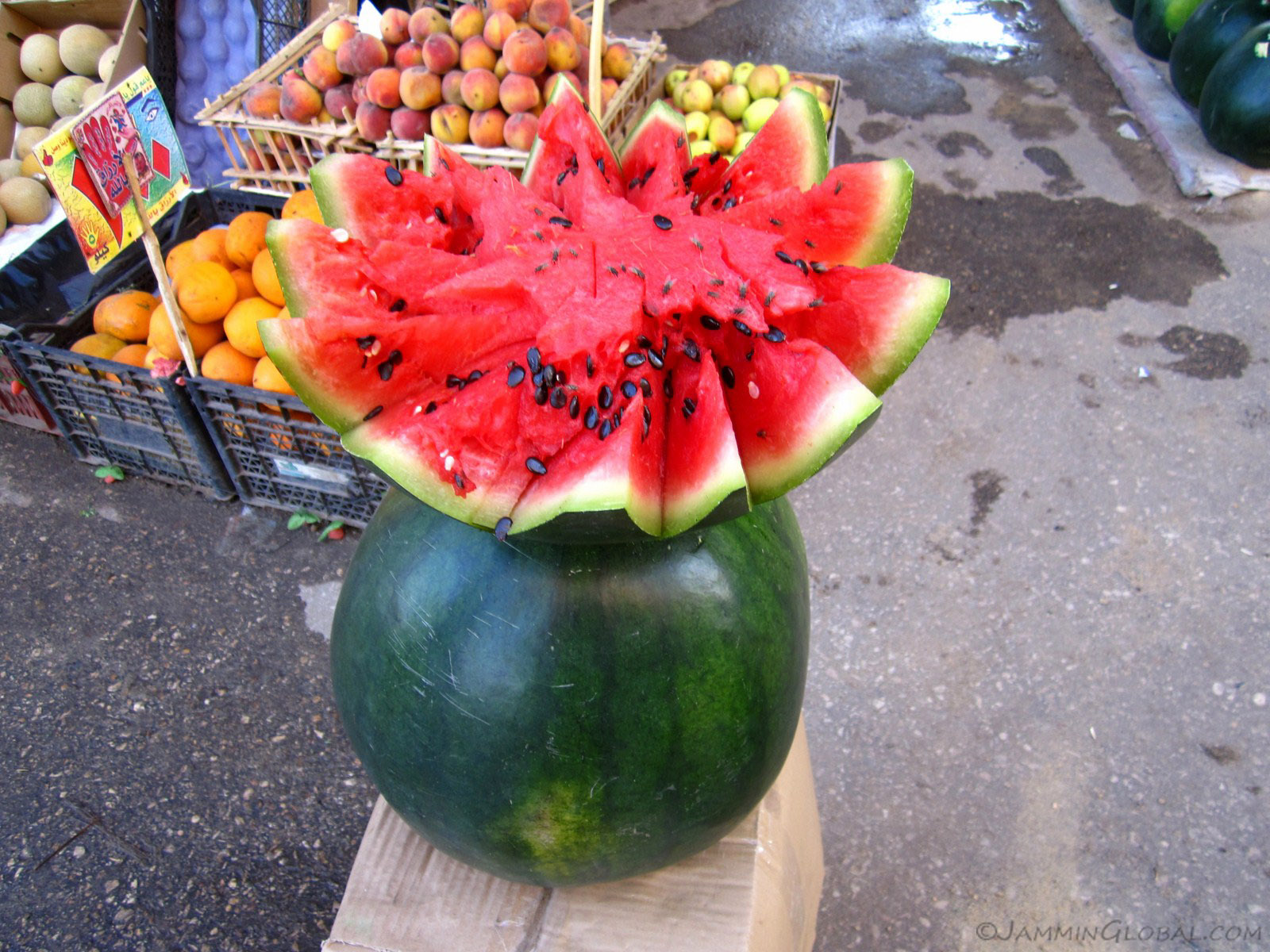
Delicious-looking watermelon, grown on the fertile banks of the Nile.
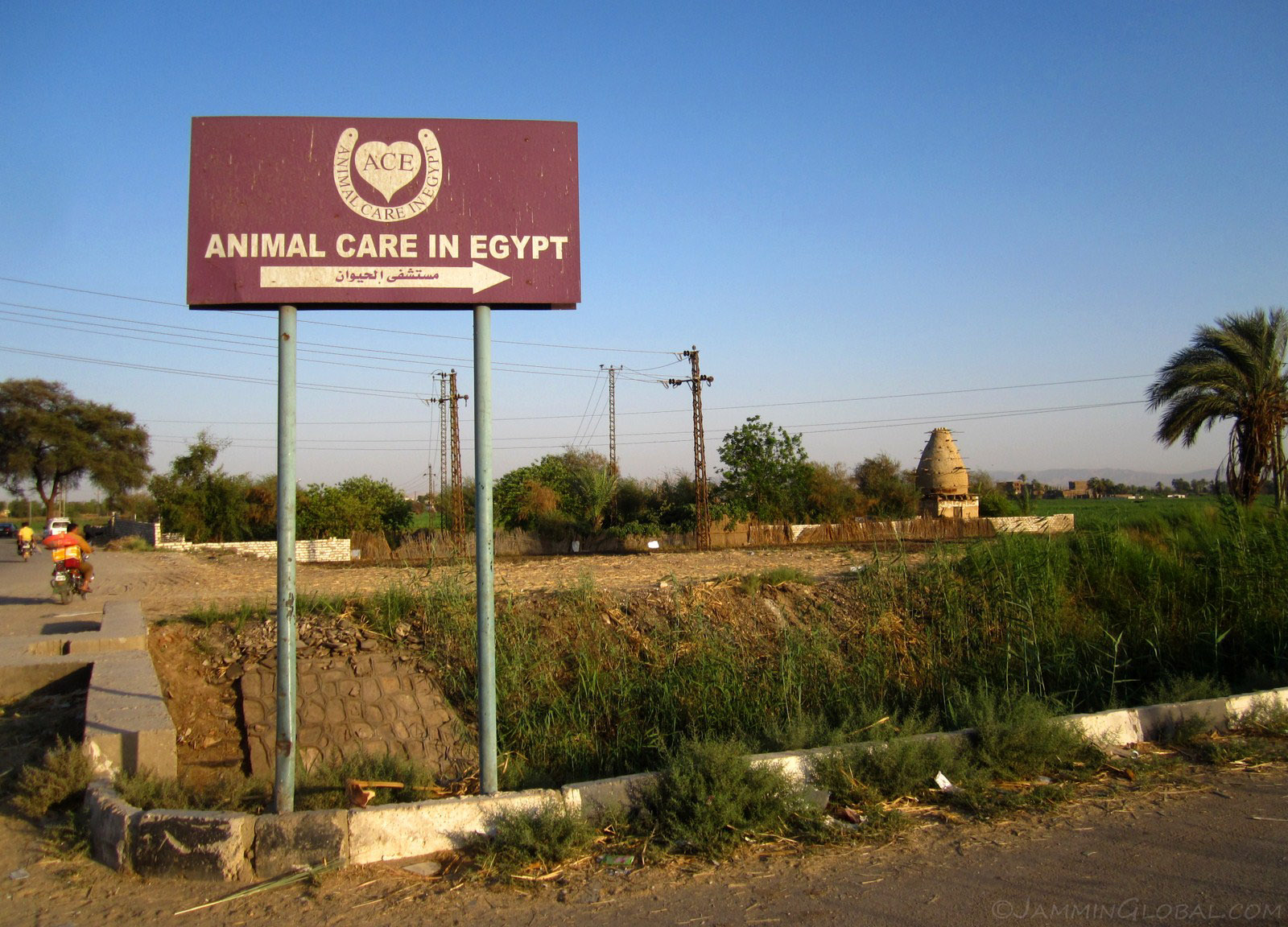
On the eastern edge of Luxor lies the Animal Care in Egypt center.
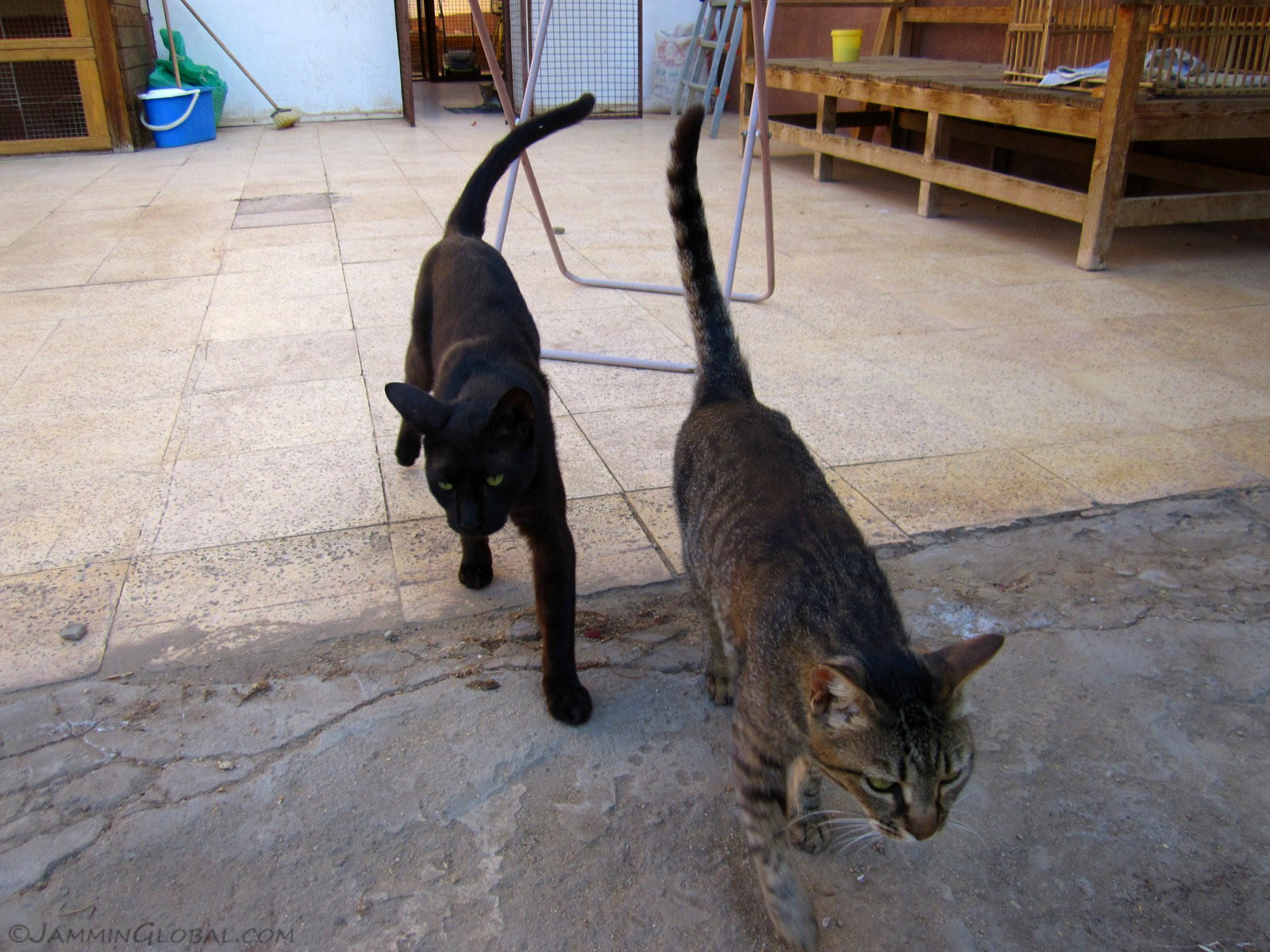
A baby, black panther and a domestic house cat at the animal shelter. Ernesto said an expat Brit, living in Luxor, recently died and left a hefty sum for the shelter, which was doing its part in taking in sick and abandoned animals.
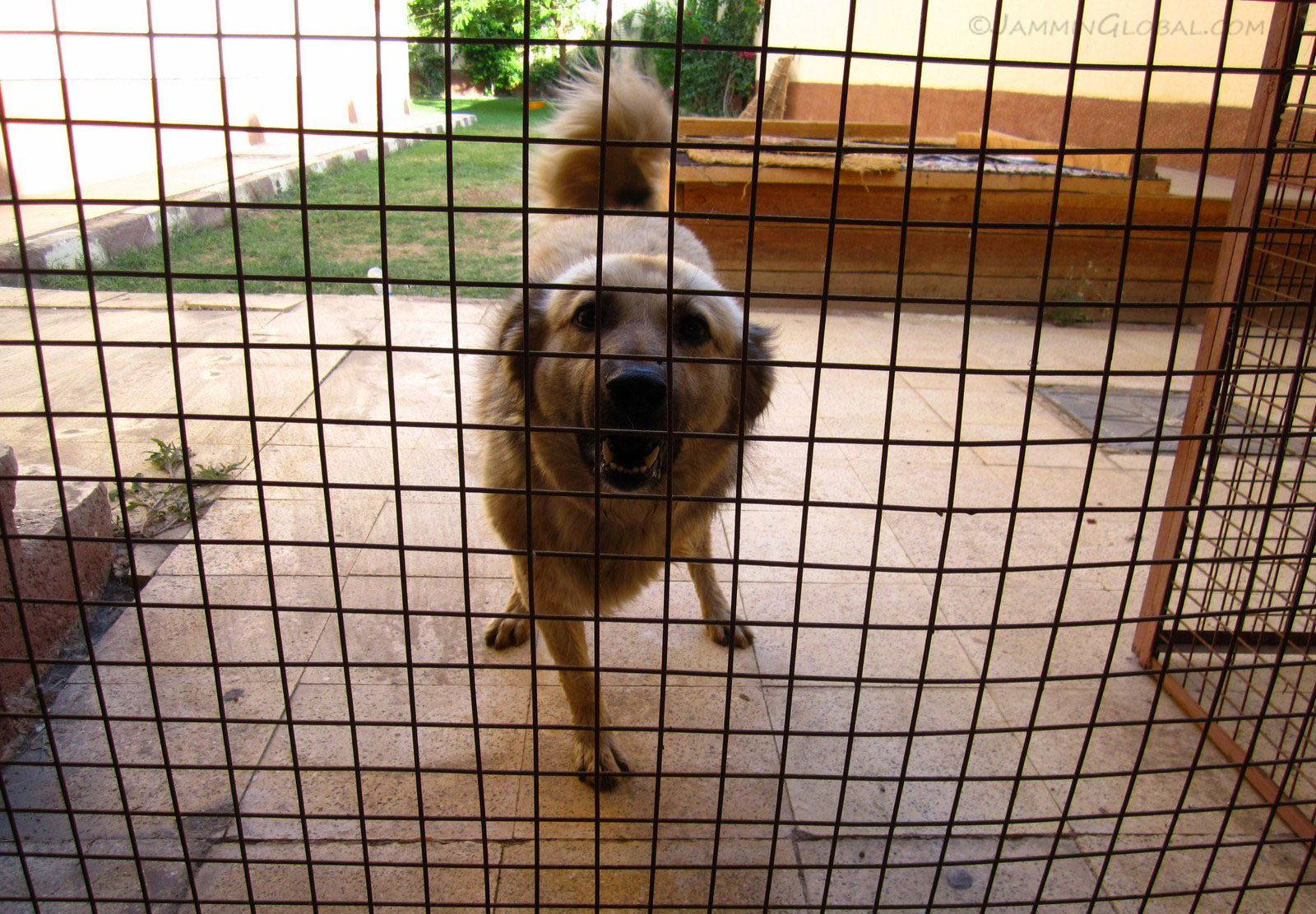
A fierce, three-legged dog at the shelter.
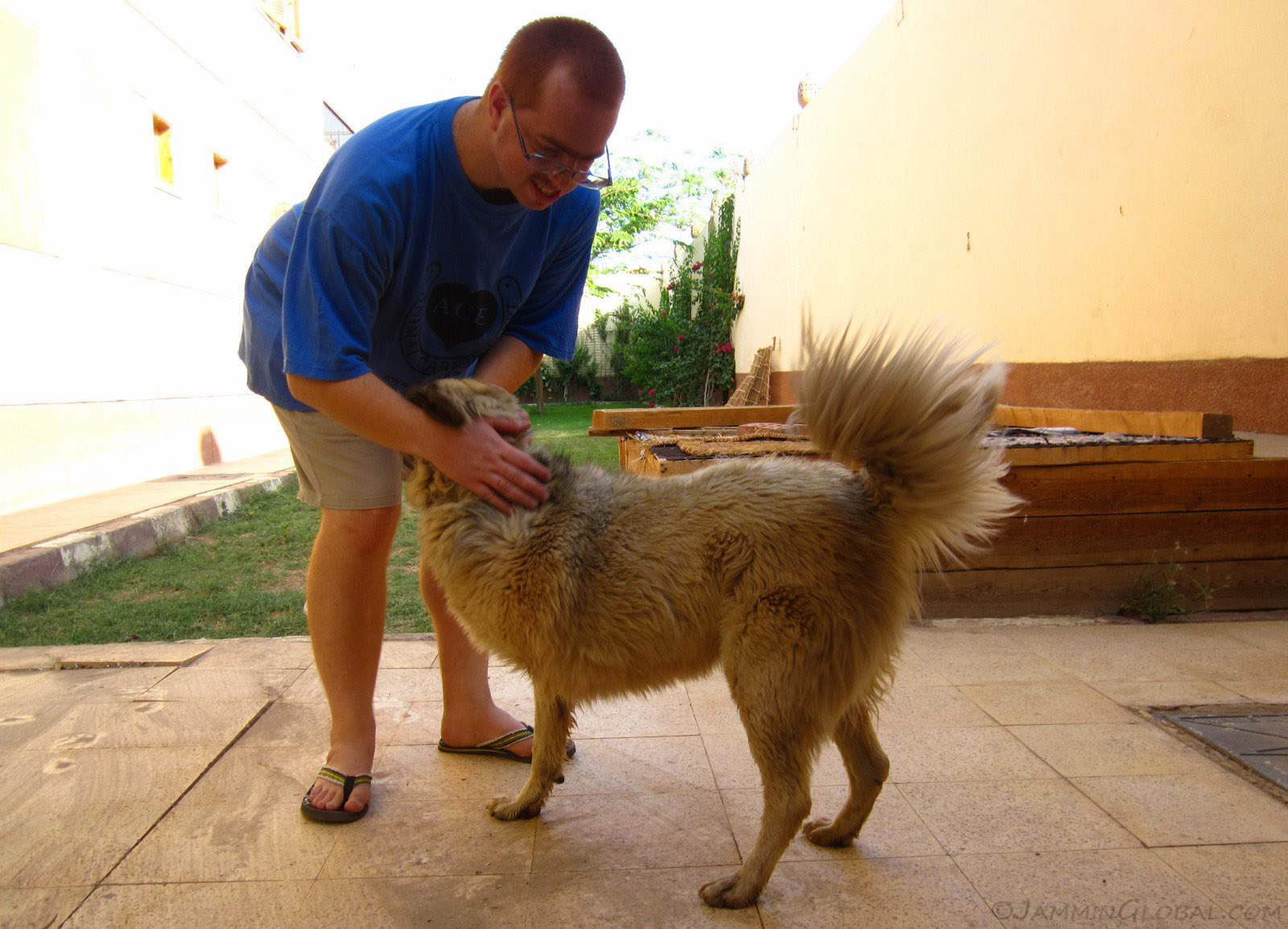
But he was putty in Ernesto's hands.
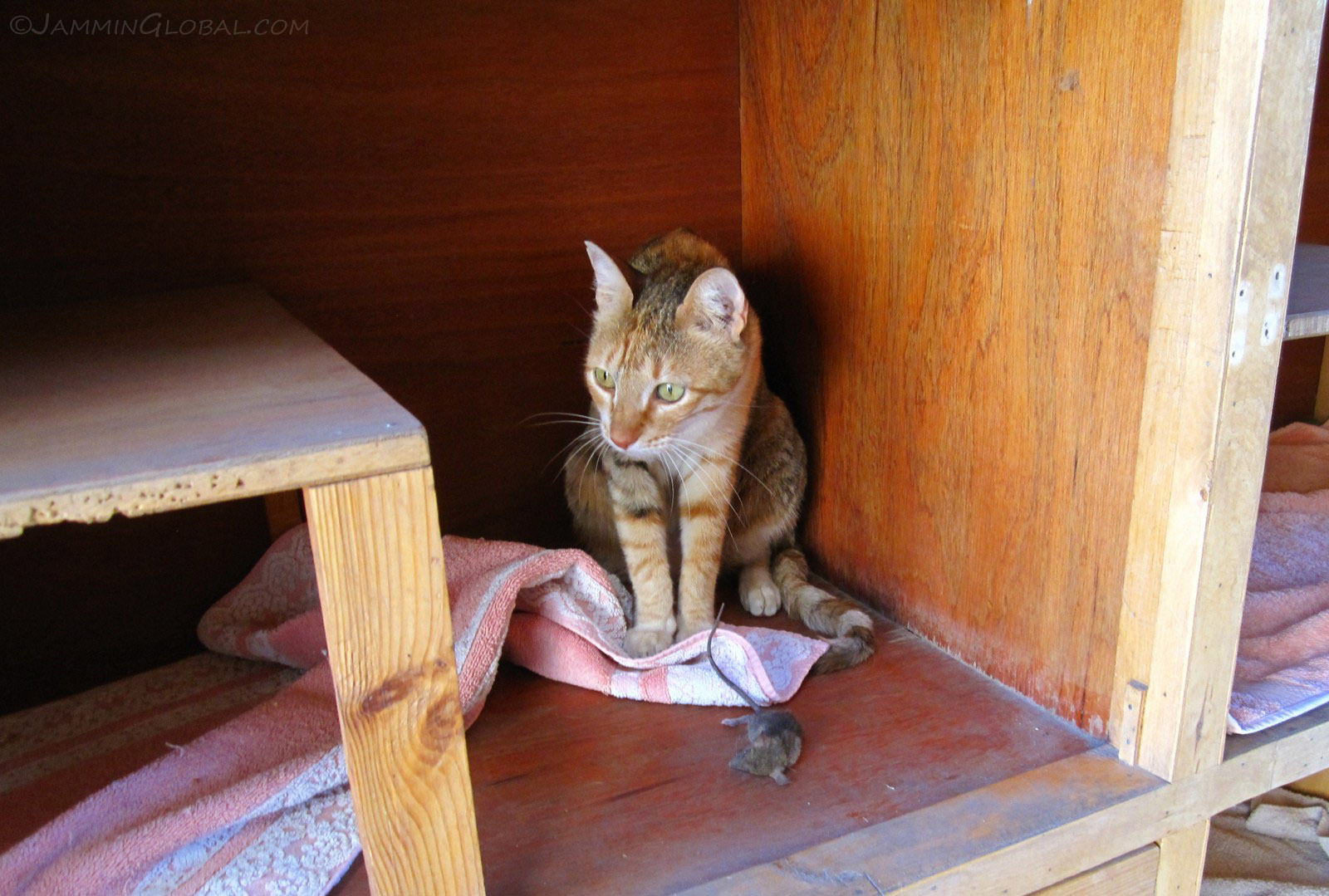
A shelter cat showing off its catch. Its lion cousins would be proud.
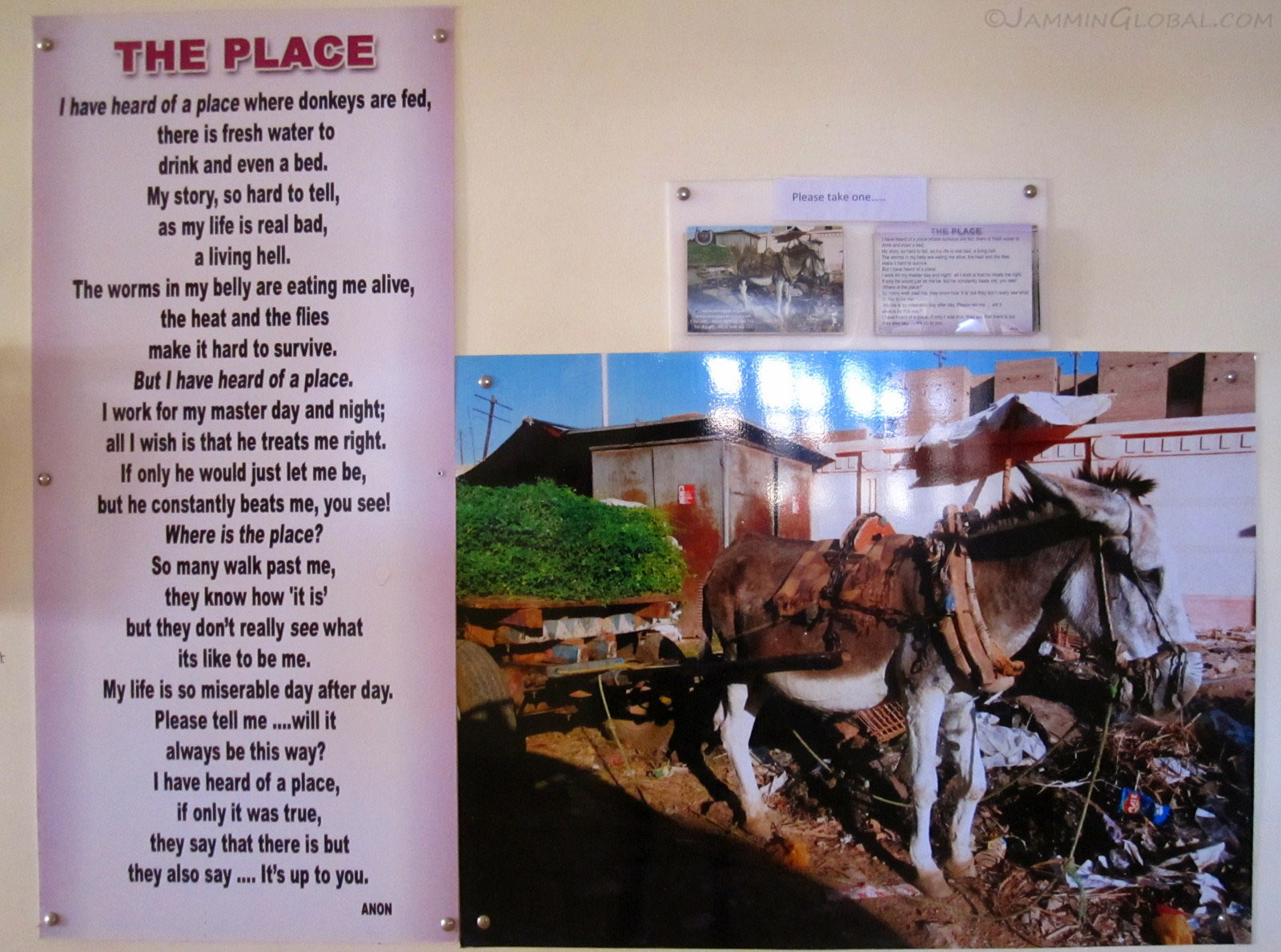
Besides unwanted cats and dogs, the shelter was primarily focused on taking in sick and abused donkeys and horses. Donkeys are used extensively in Egypt and other countries in the region for hauling heavy goods. Horses are used for drawing carriages and sadly, their owners don't pay enough attention to the health of their animals and usually over-work them in an abusive manner.
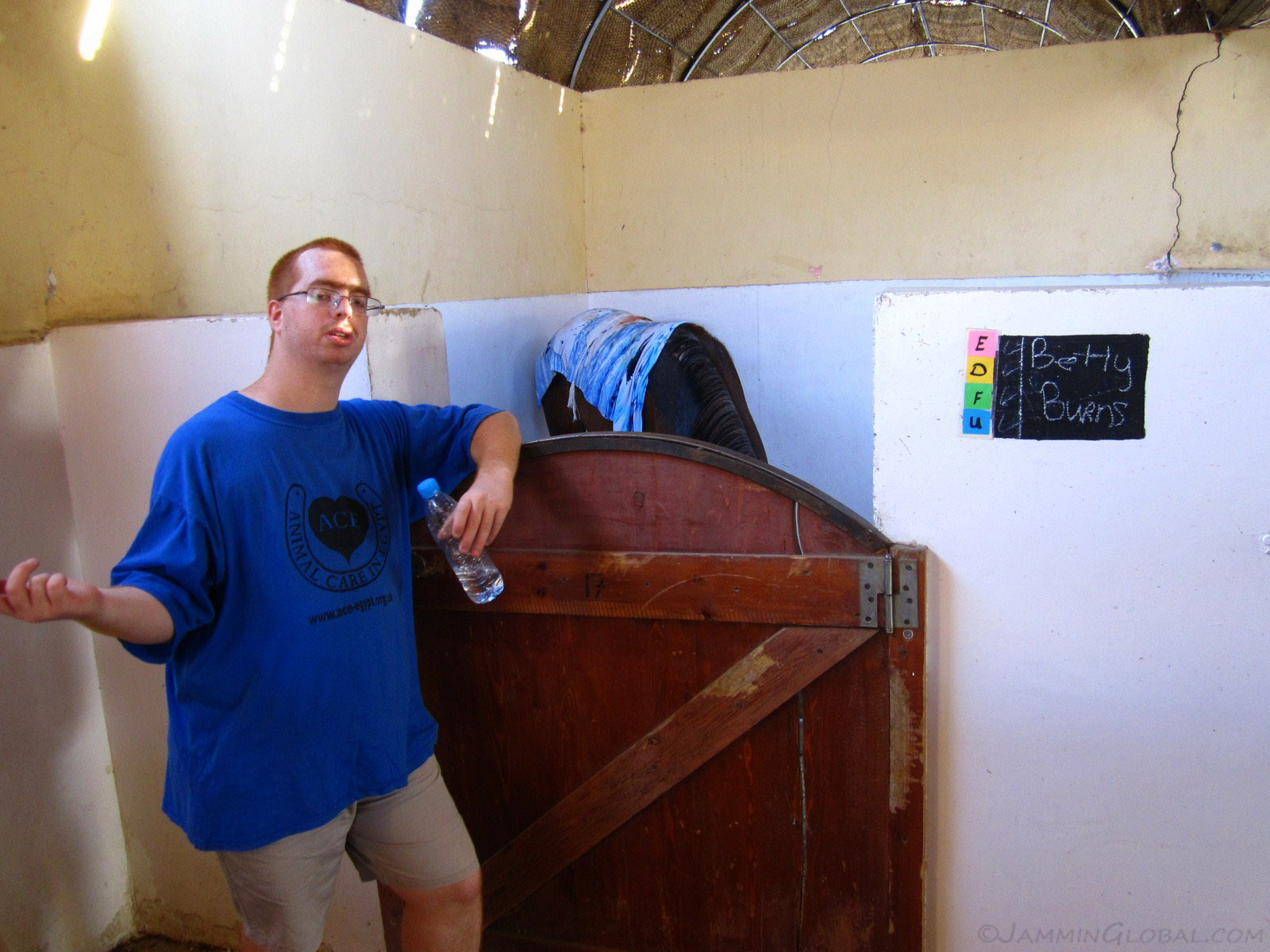
Ernesto's been volunteering at the center since he's been in Egypt and he puts in a few hours every few days. He explained that the center offers free medical care for local donkeys and horses, yet their owners only bring them in when their animal's maladies are quite extreme, leading to longer recovery periods.
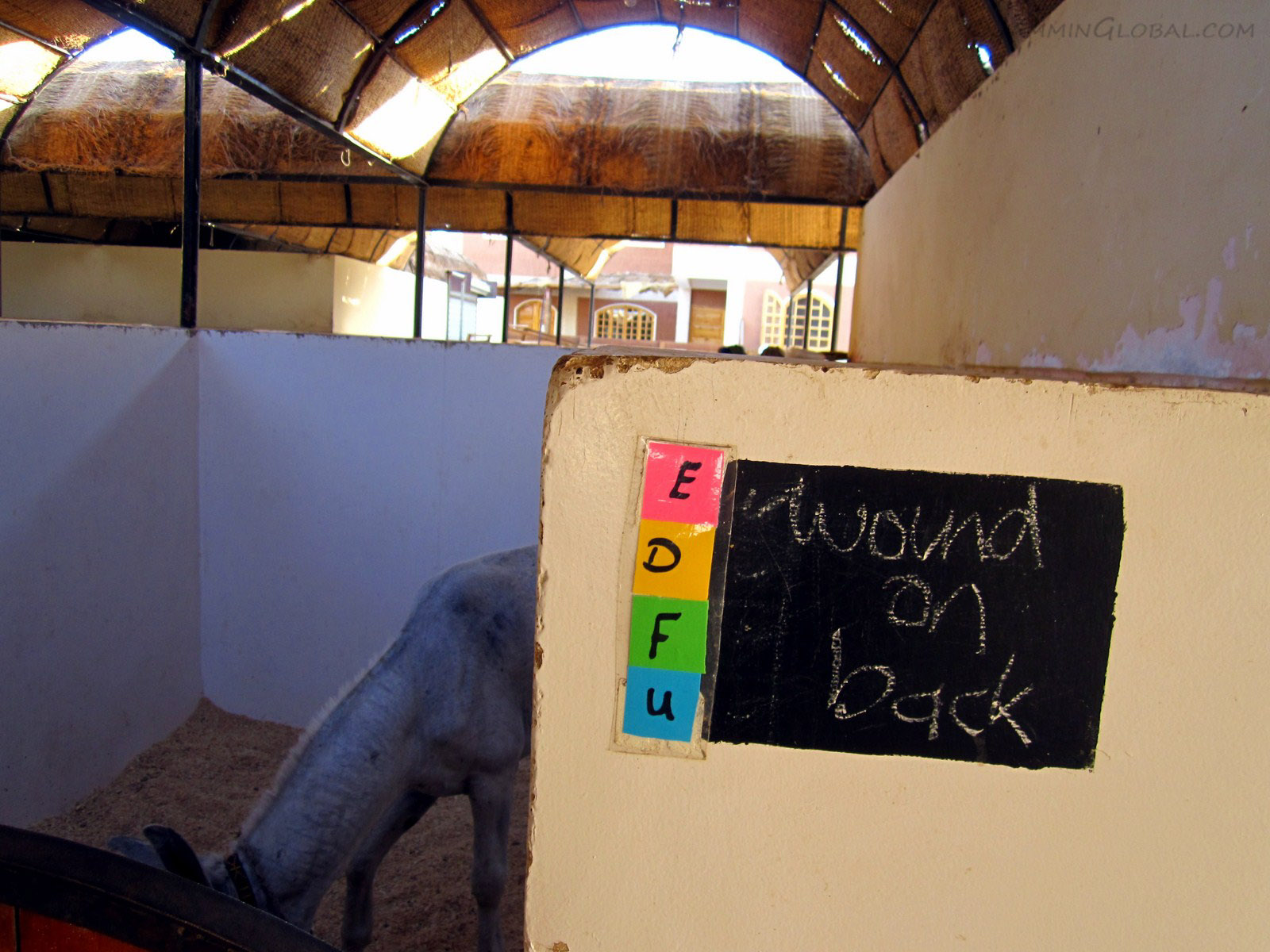
A sign outside each stable described the injury or reason for admittance.
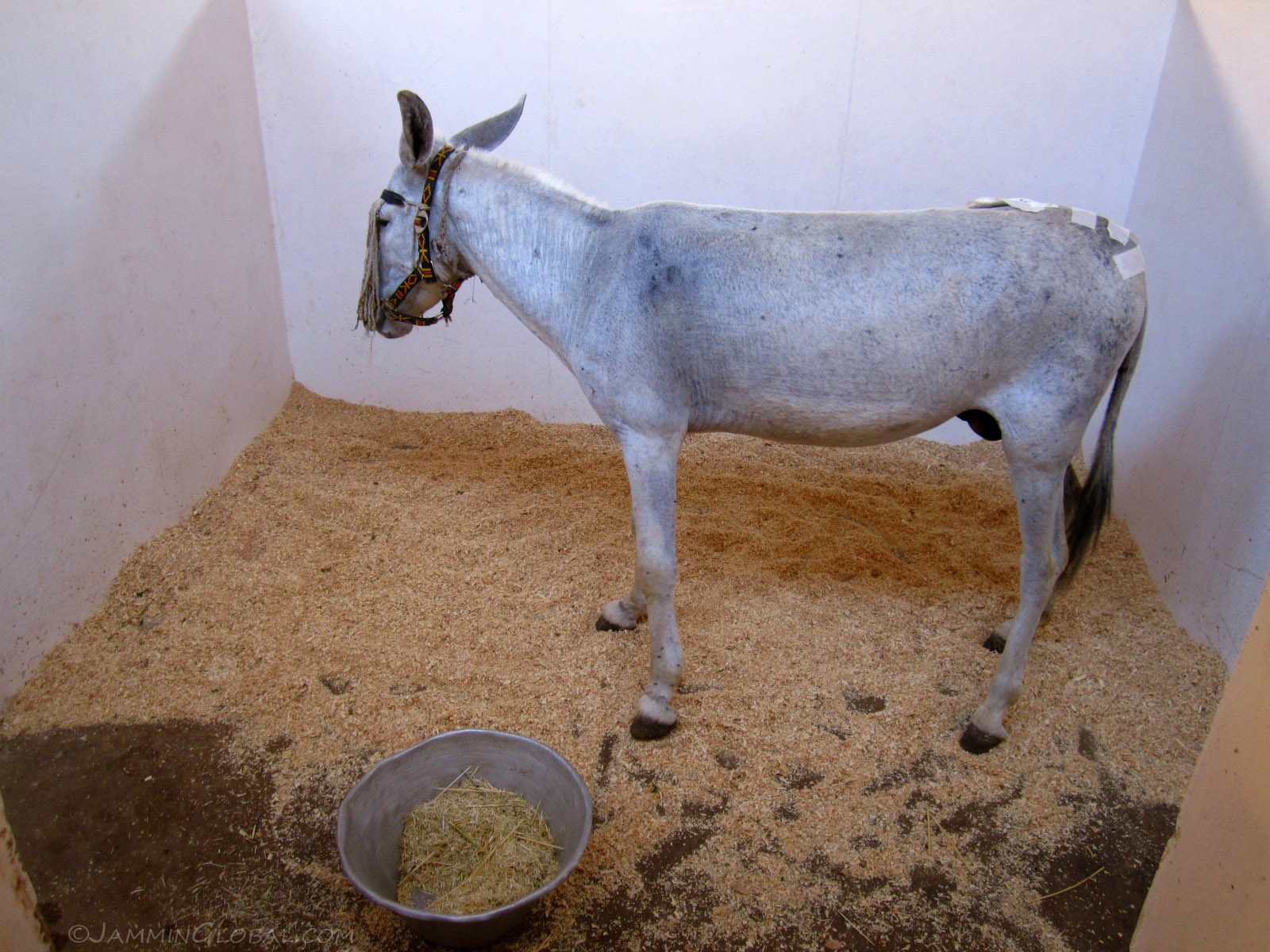
This donkey had a wound on its back, probably from repetitive beatings from its master’s whip.
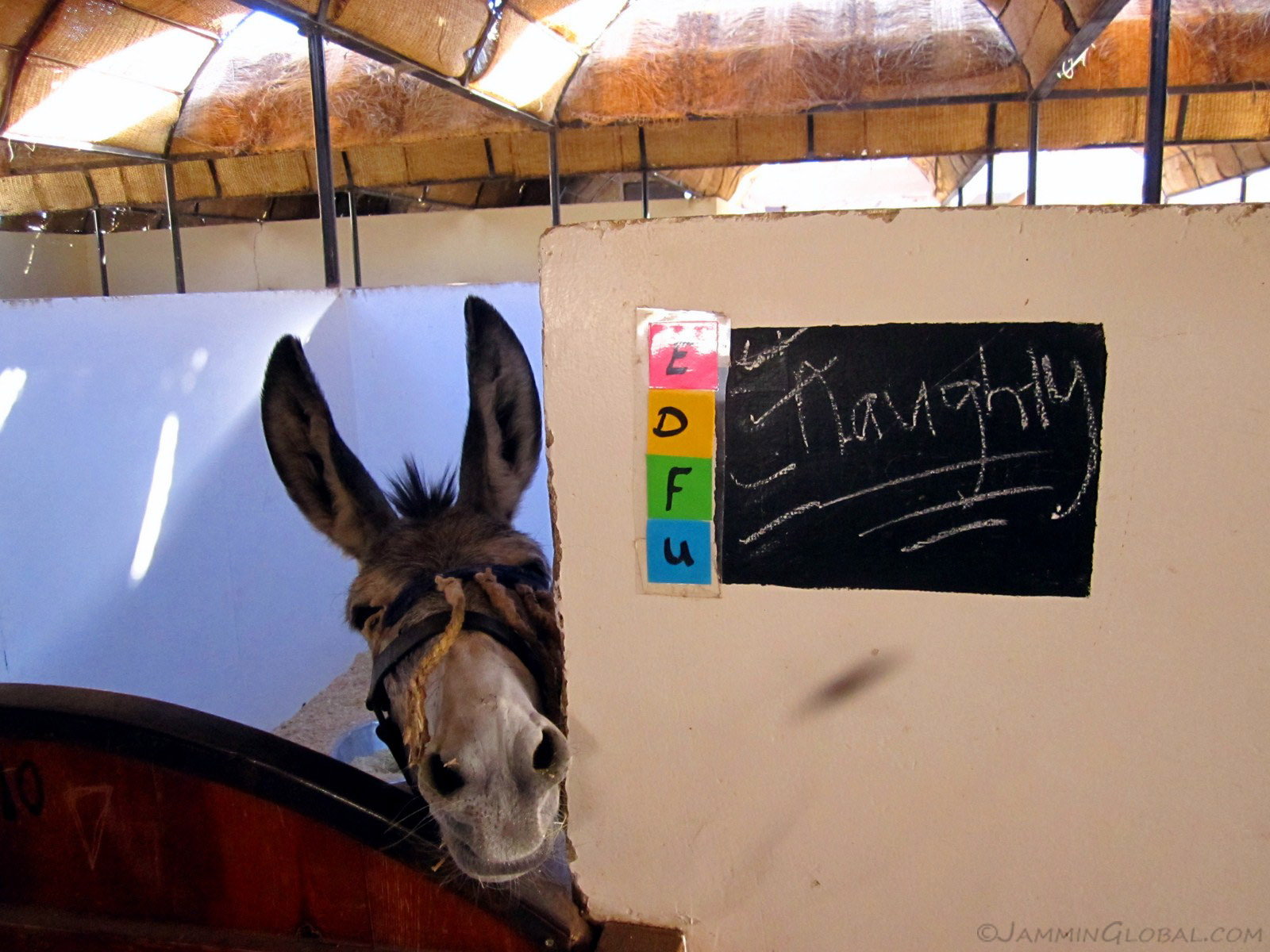
Admitted for being too naughty! If I was a donkey, I'd want this to be my condition. It refers to being disobedient to its master. I think it's quite a smart ploy by this donkey: 'just don't cooperate and they'll admit you to these stables where there's enough food and friends.'
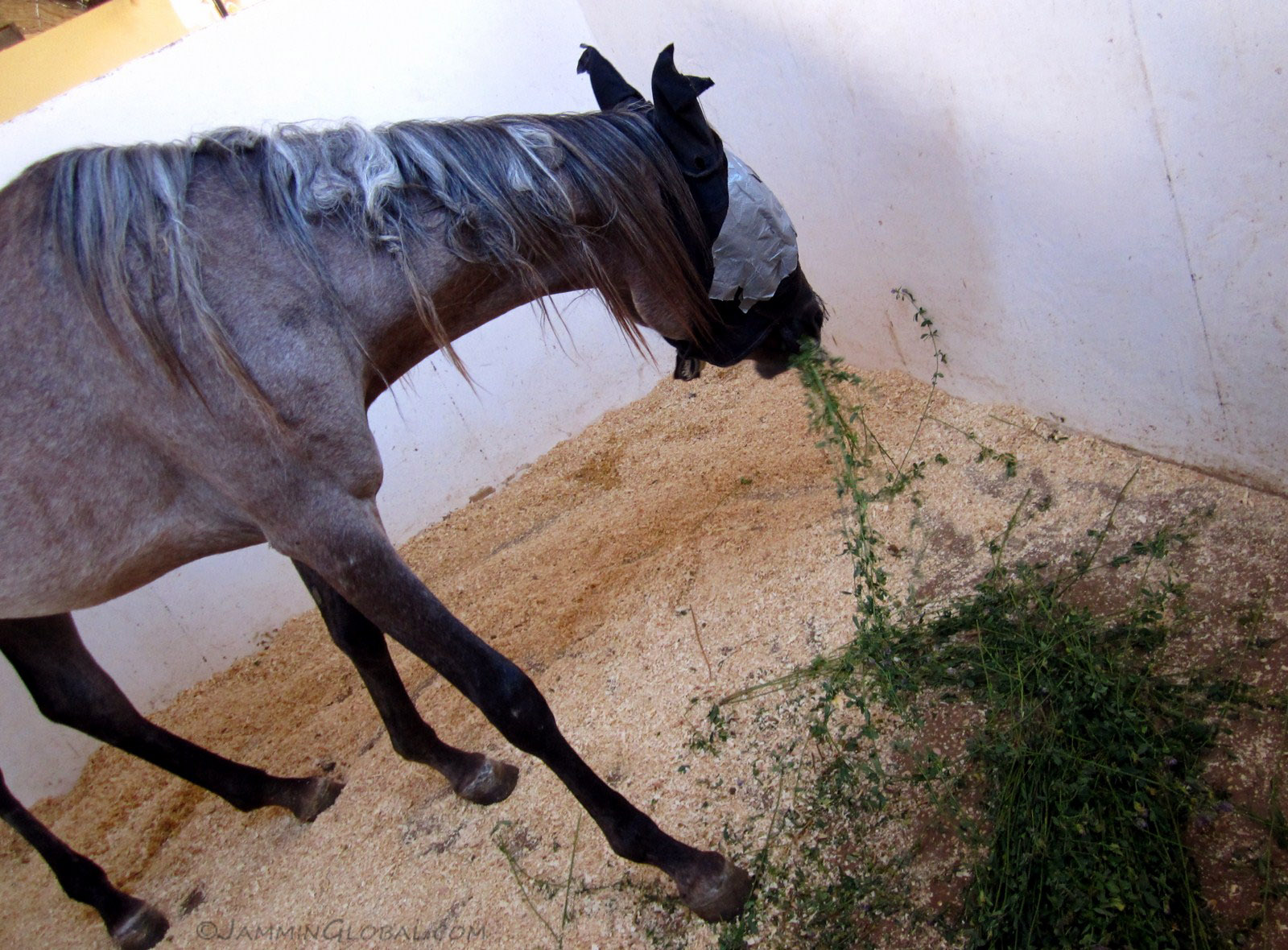
A beautiful horse eating some fresh alfalfa. Their eyes are covered to reduce their stress to these surroundings and strangers.
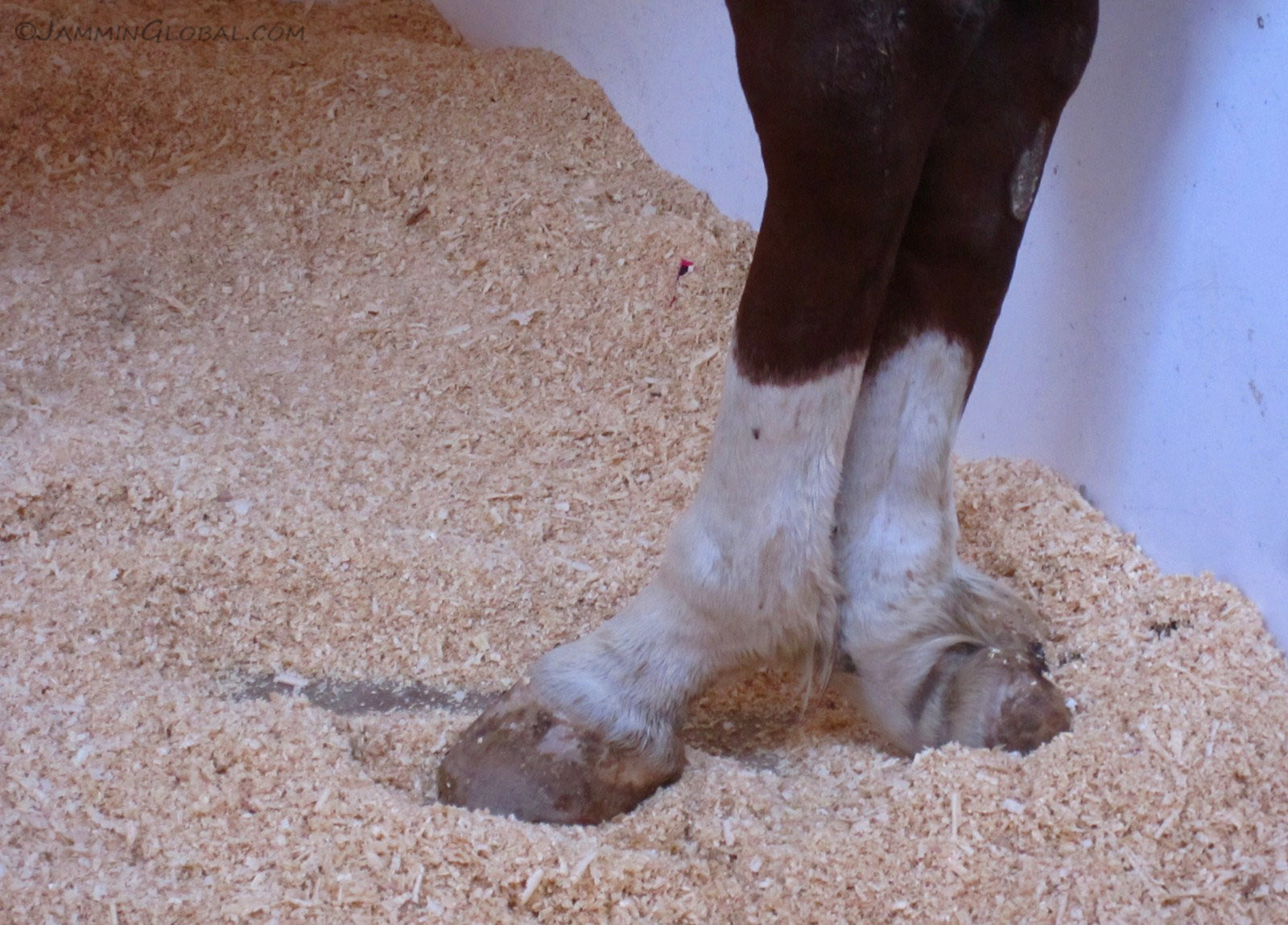
Ouch, a twisted foot. That's probably the end of its working days.
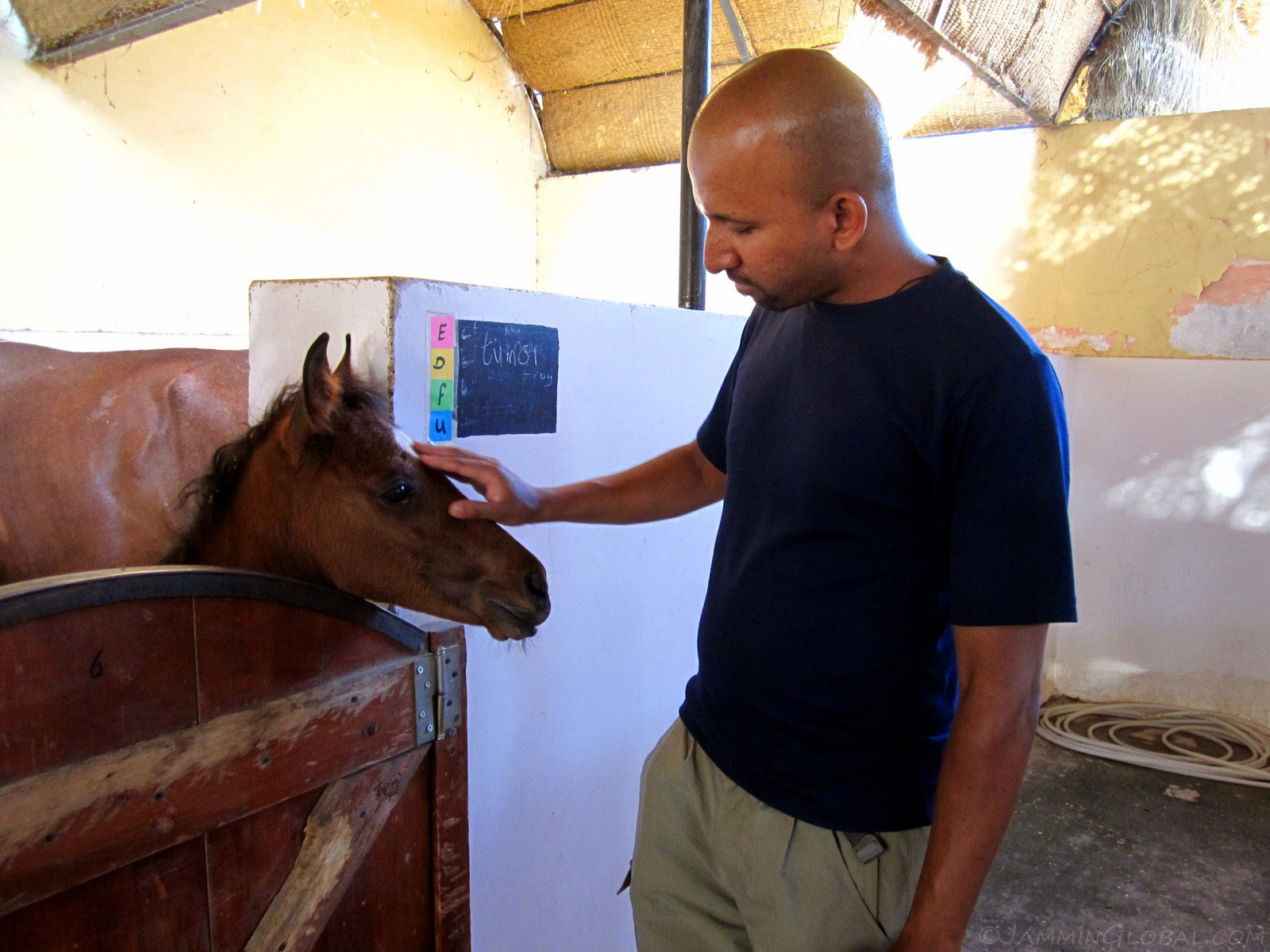
A baby colt sharing the stable of its mother, suffering from a tumor.
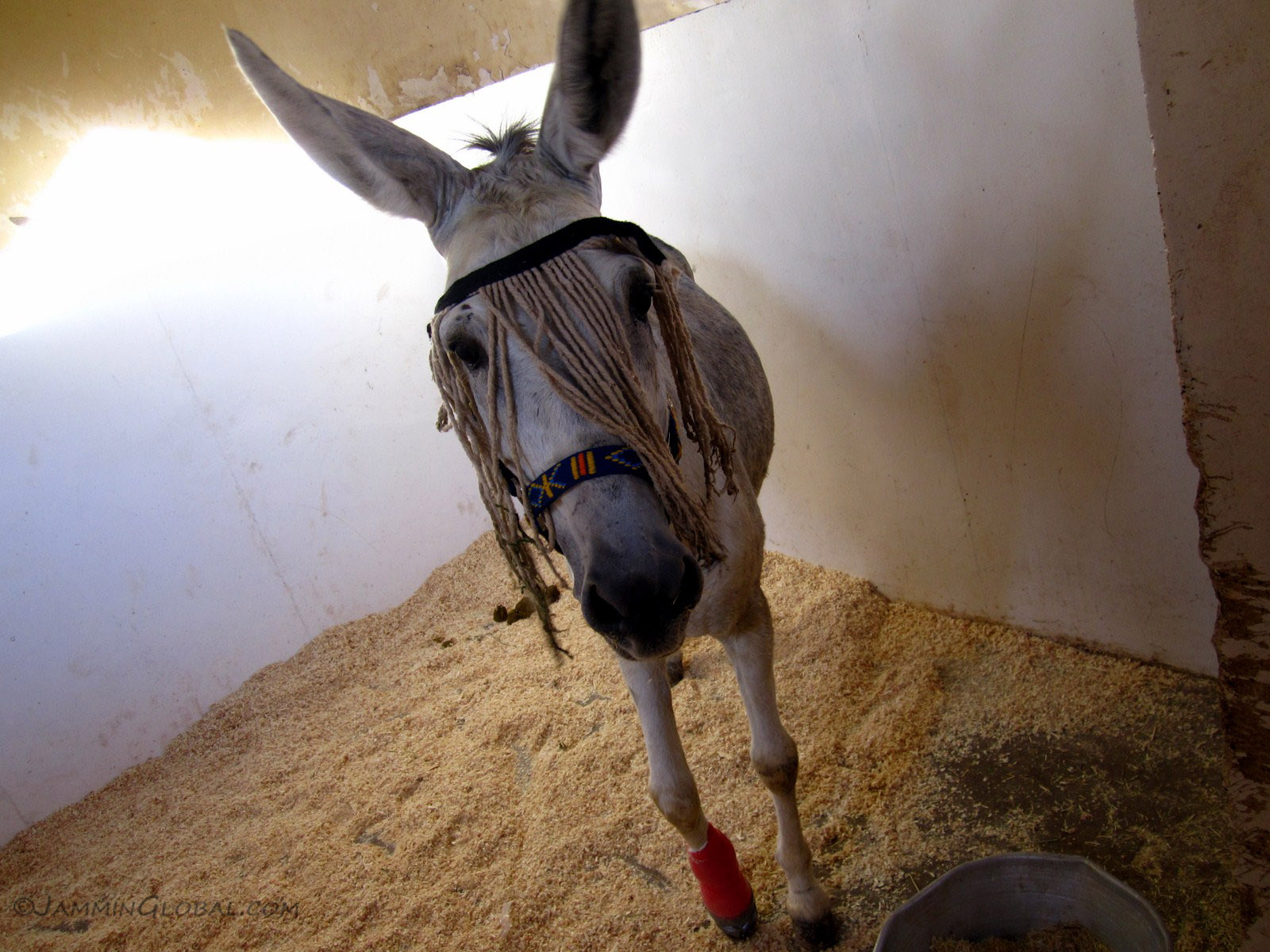
A donkey with dreads recovering from a broken foot. He's sporting some style there.
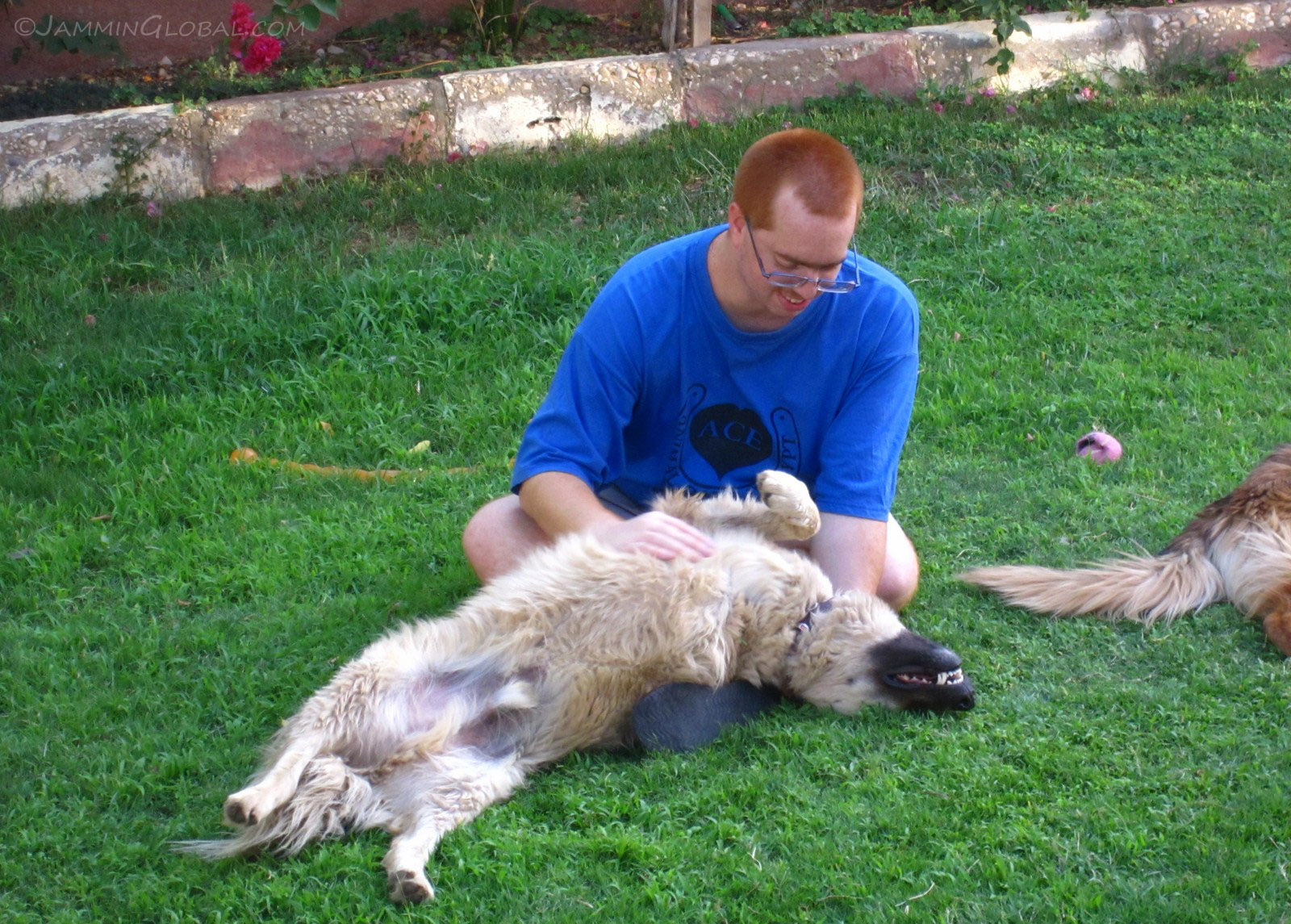
Before leaving the shelter, Ernesto played with the dogs some more. He was short one leg but not short in his doggy-ness.
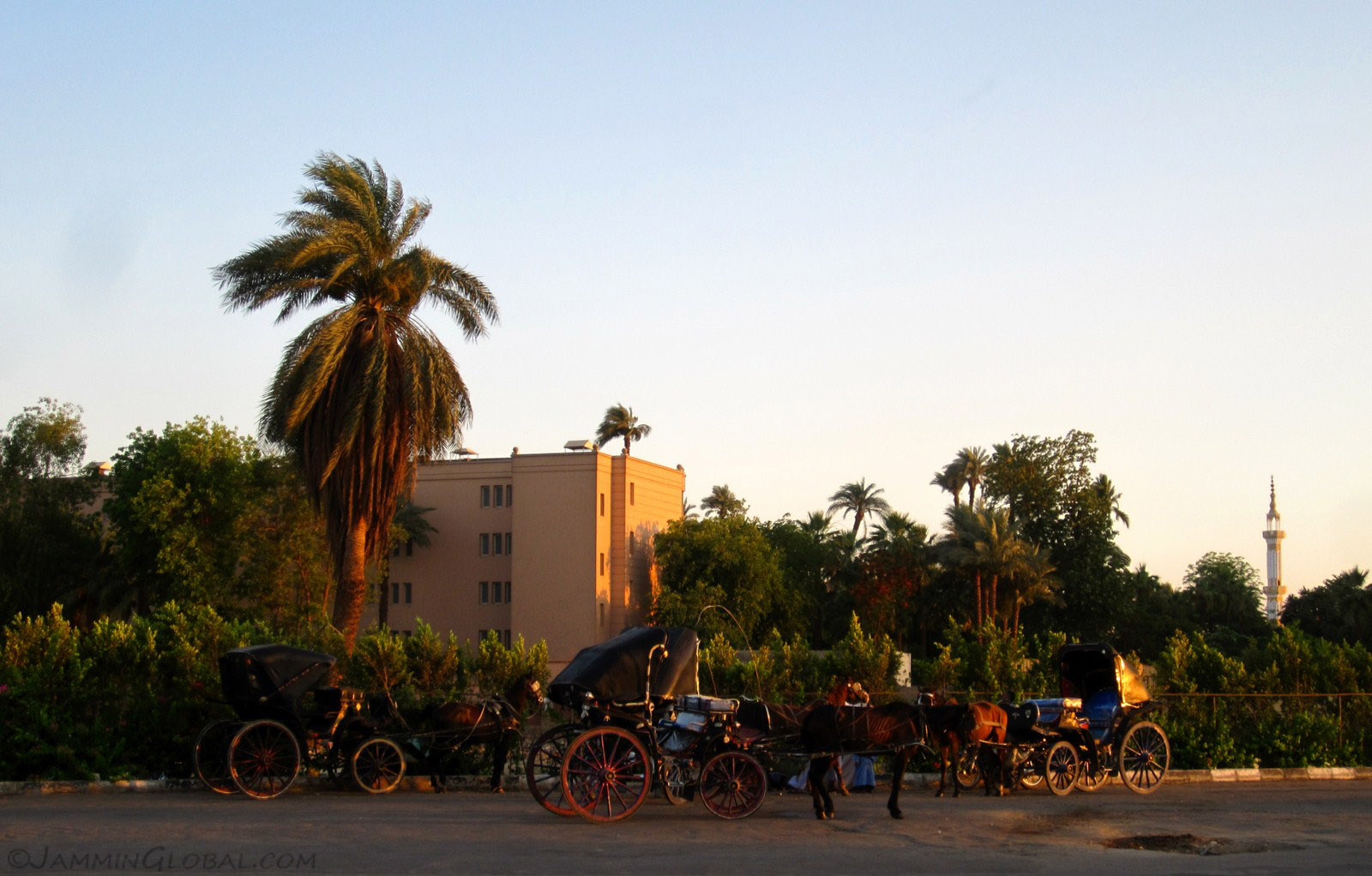
Calèches, horse-drawn carriages, waiting for the elusive tourists to spend money on them and their poorly-treated horses. Ernesto explained that after a campaign by local animal rights groups that raised awareness of animal abuses by calèche drivers, their use by tourists dropped. Only a few calèche drivers have drawn the connection between a well-treated horse and increased income.
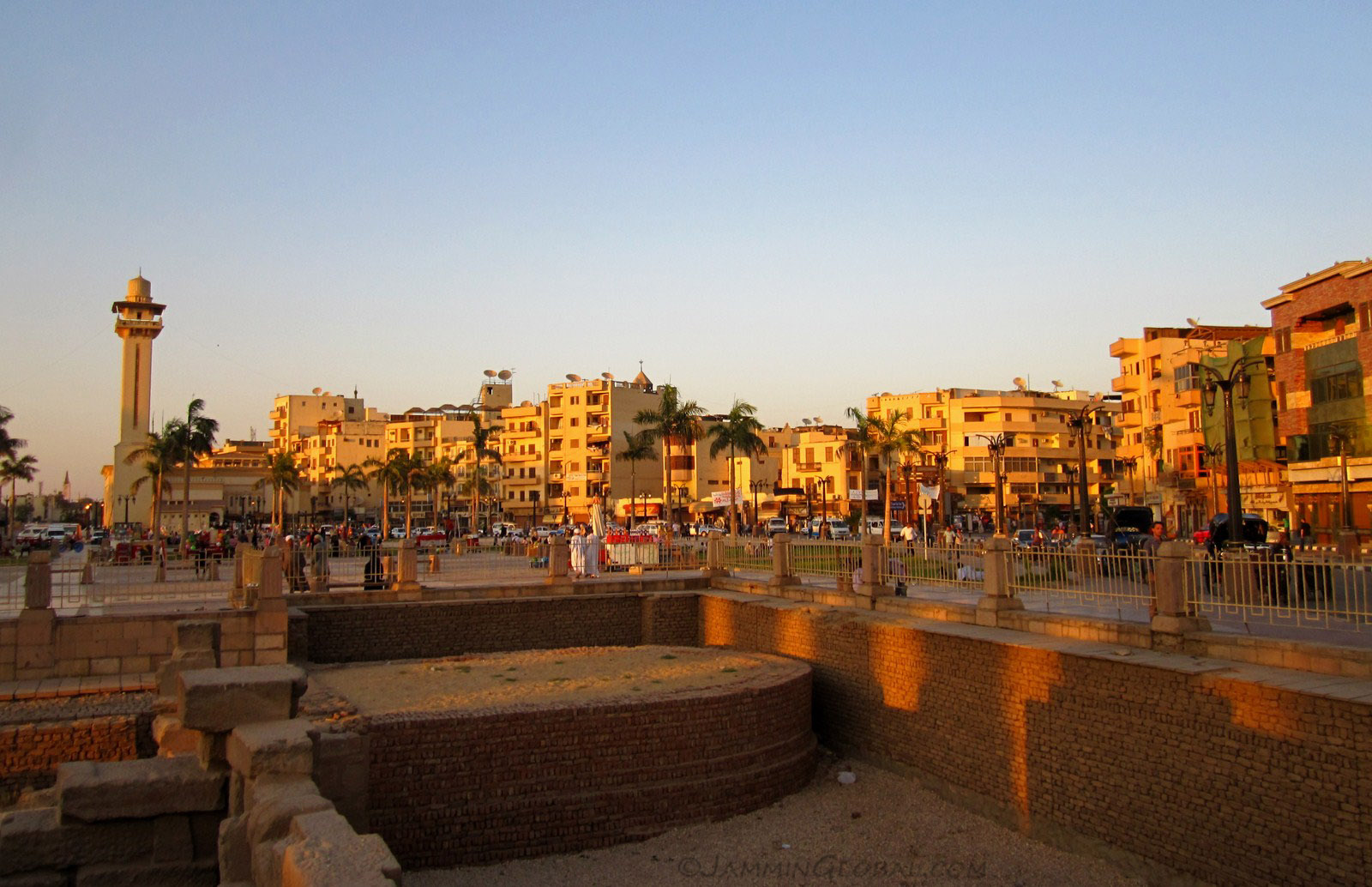
Waiting for the ferry to cross back to the west bank during that magic hour of sunlight, just before sunset, that painted Luxor Temple and its modern town in shades of gold.
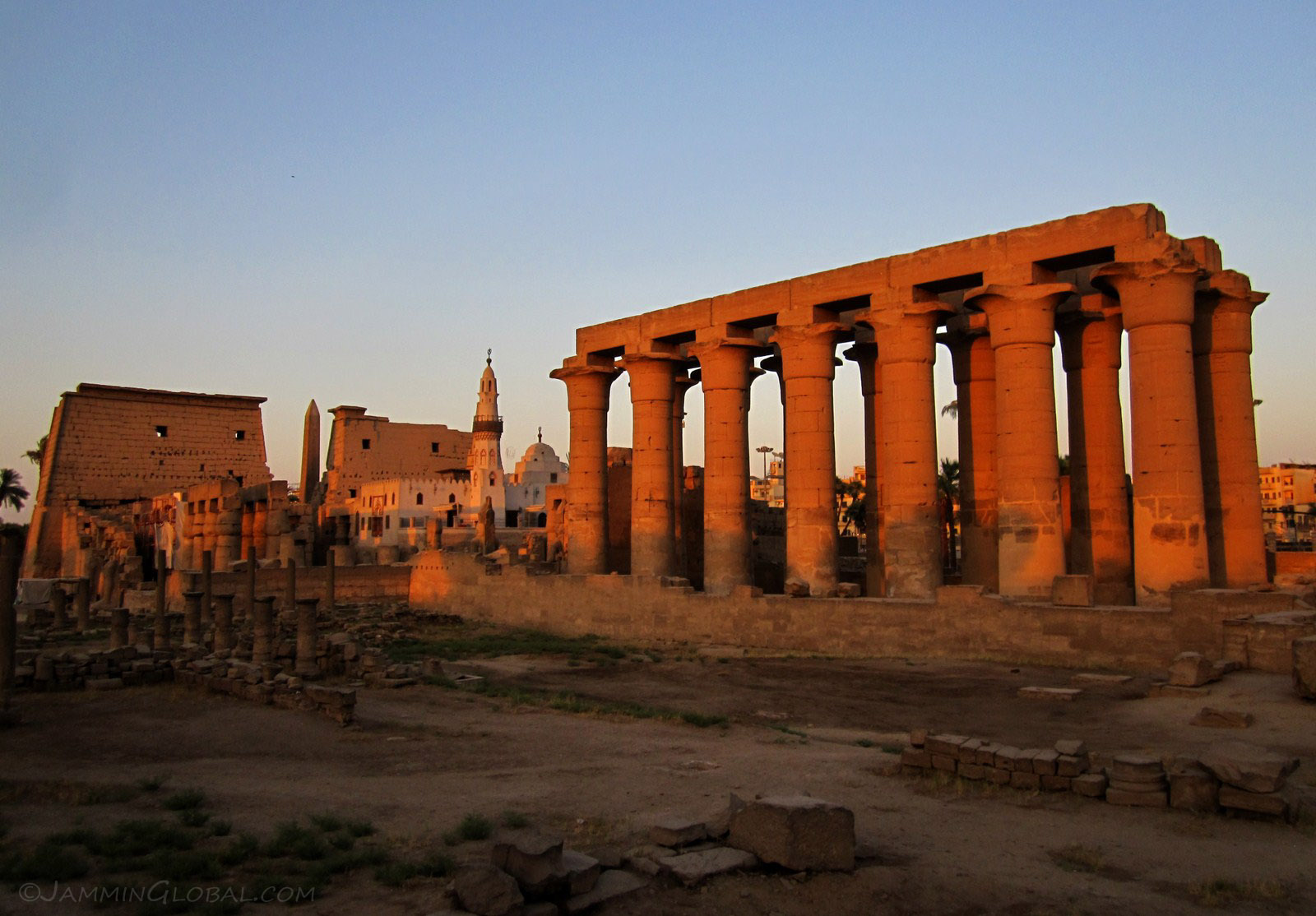
Amenhotep III's colonnade of Luxor Temple, glowing in the fading light. Between the entrance pylon and the colonnade lies the Abu Haggag Mosque that was built on top of the ruins in the 11th century AD. Luxor was ruled by a Coptic Christian Princess at the time and she was tricked by Sheikh Abu Haggag, who came from Bagdad, to hand over the land of Luxor Temple to him. And upon his death, a mosque was built there in his name. The Muslim residents of Luxor have refused to have it removed, even though it's clearly intruding on this much older heritage site.
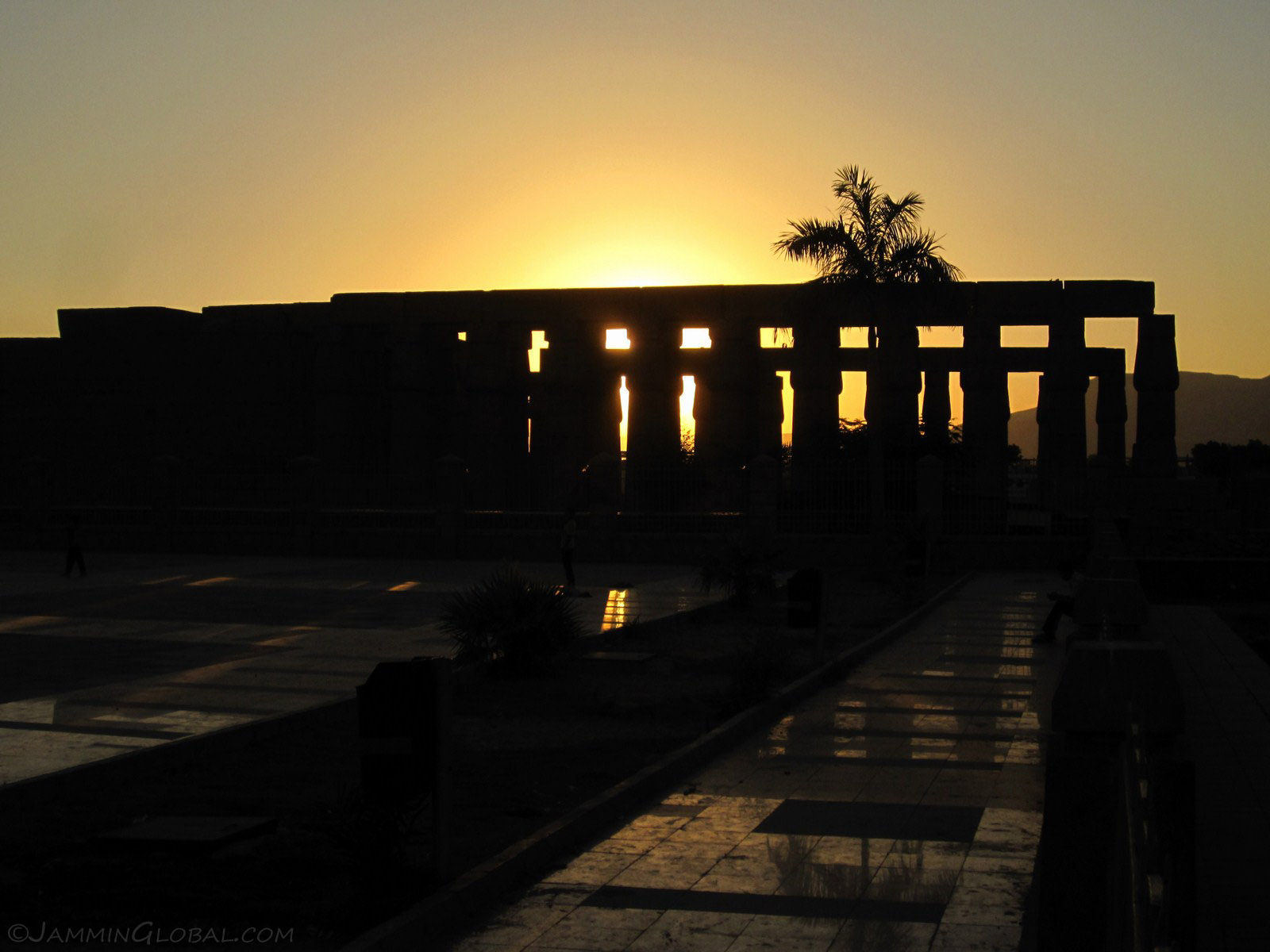
The peristyle court of Amenhotep III with the setting Sun being blocked by the pillars of the central corridor of Luxor Temple. This easy access to the wonderful monuments of Ancient Egypt have earned Luxor the title of the World's Greatest Open Air Museum.
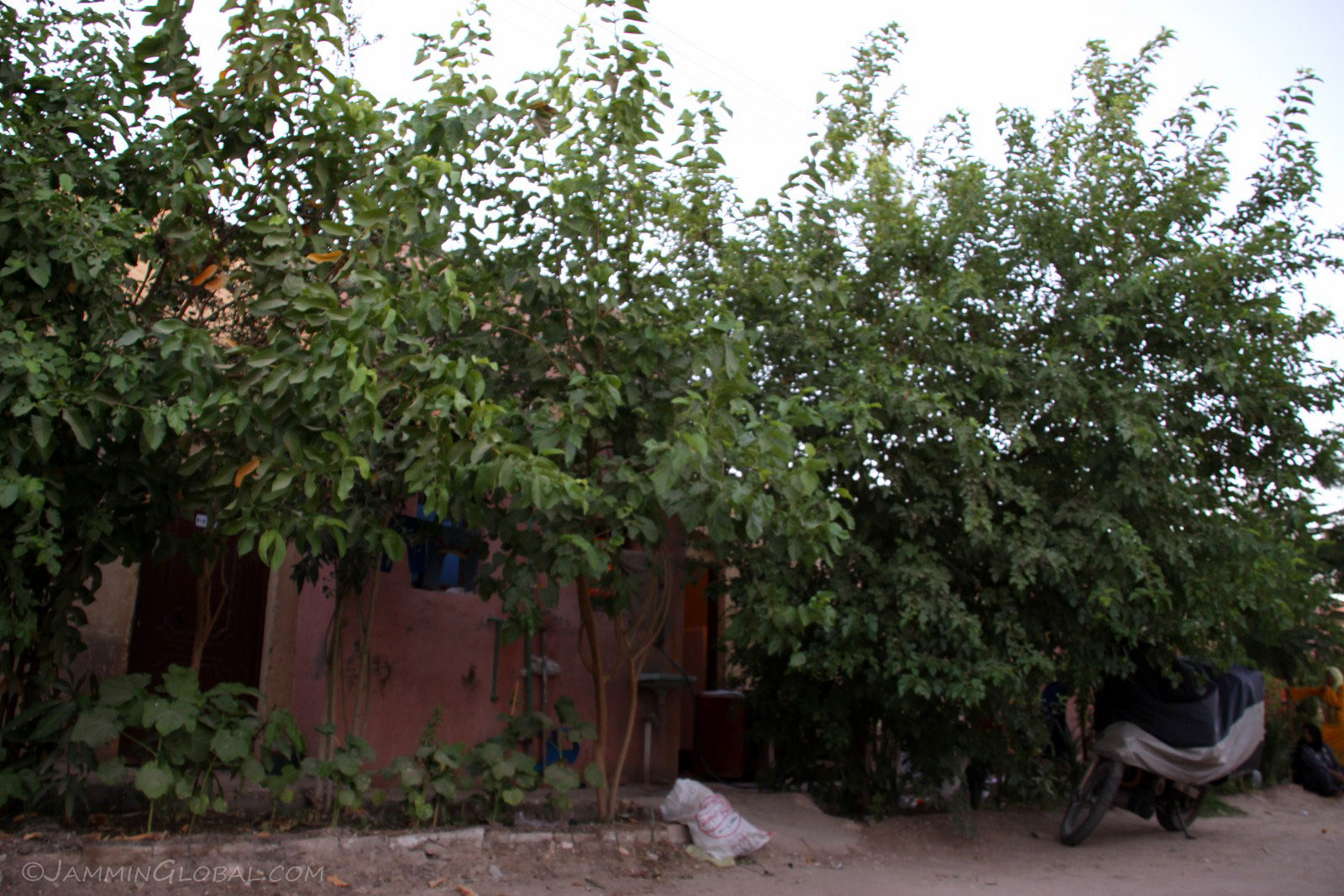
sanDRina parked under the trees in front of the house of Ernesto's family in New Qurna. I got to know Mohammed and Fatima over the few days I spent there and when I asked them if I could take some photos, they said it was no problem to photograph the children, but please, no photos of the women, in accordance to their Muslim traditions.
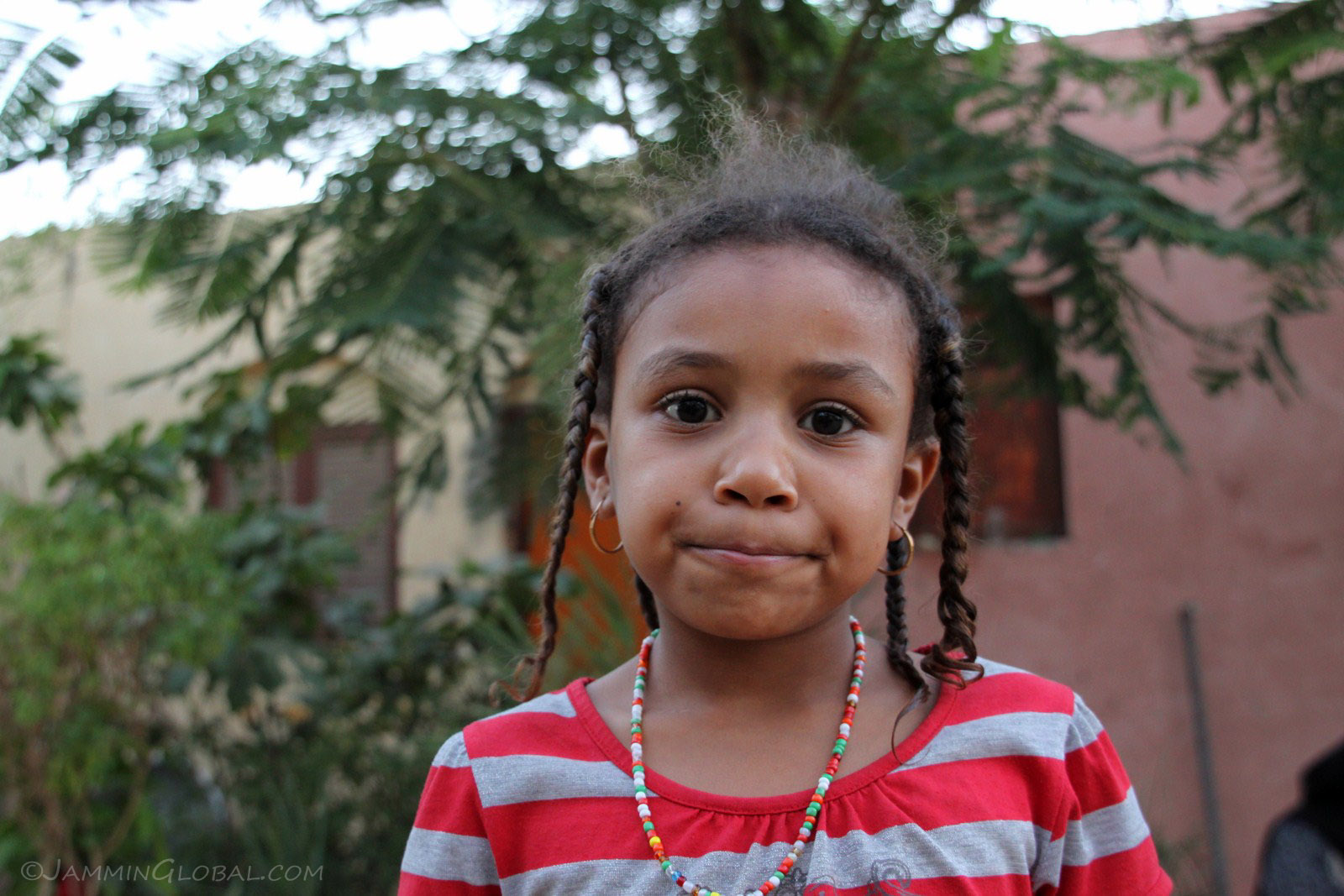
They pushed their eldest daughter in front of my camera and this was her official smile...
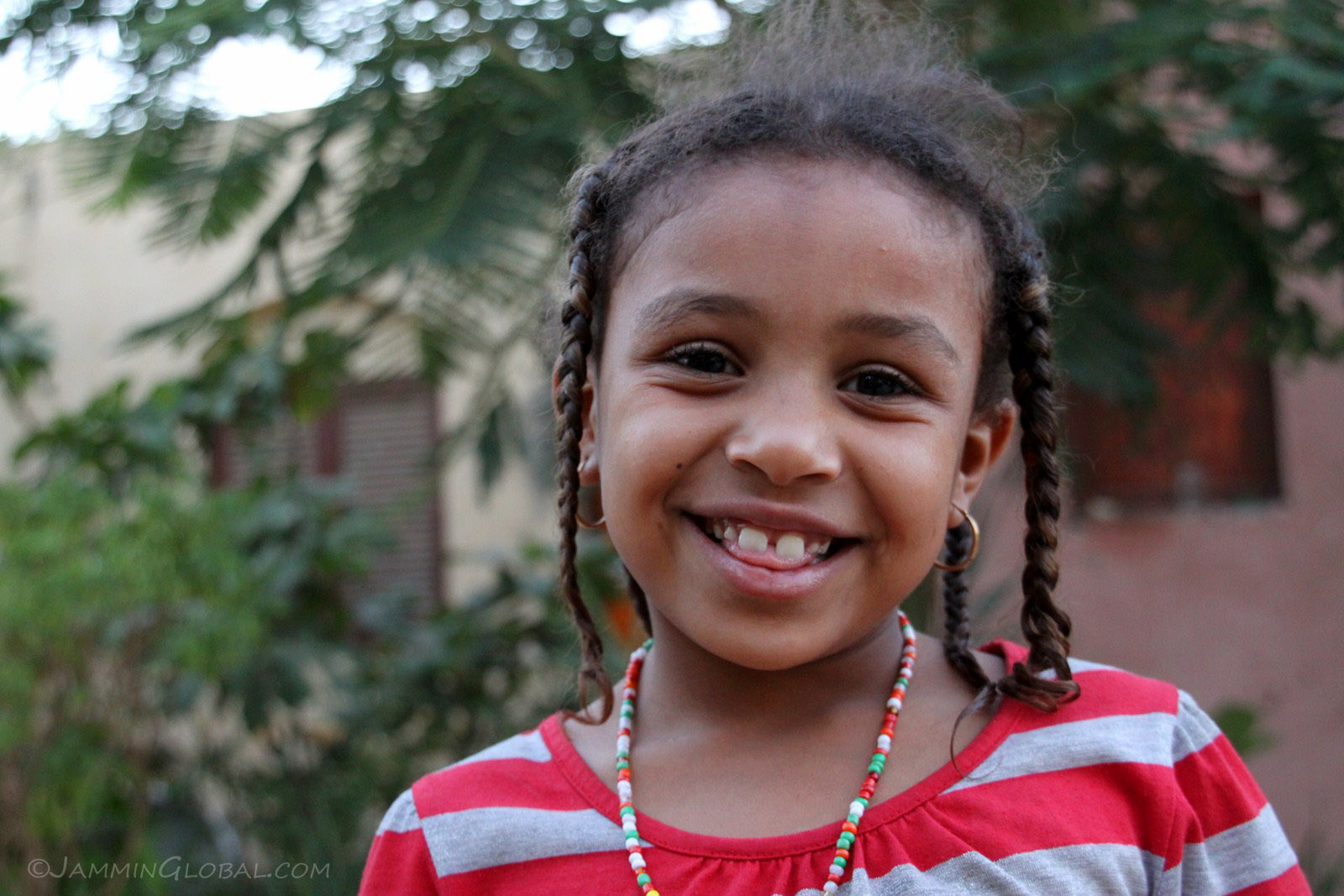
...now, that's more like it. A natural smile.
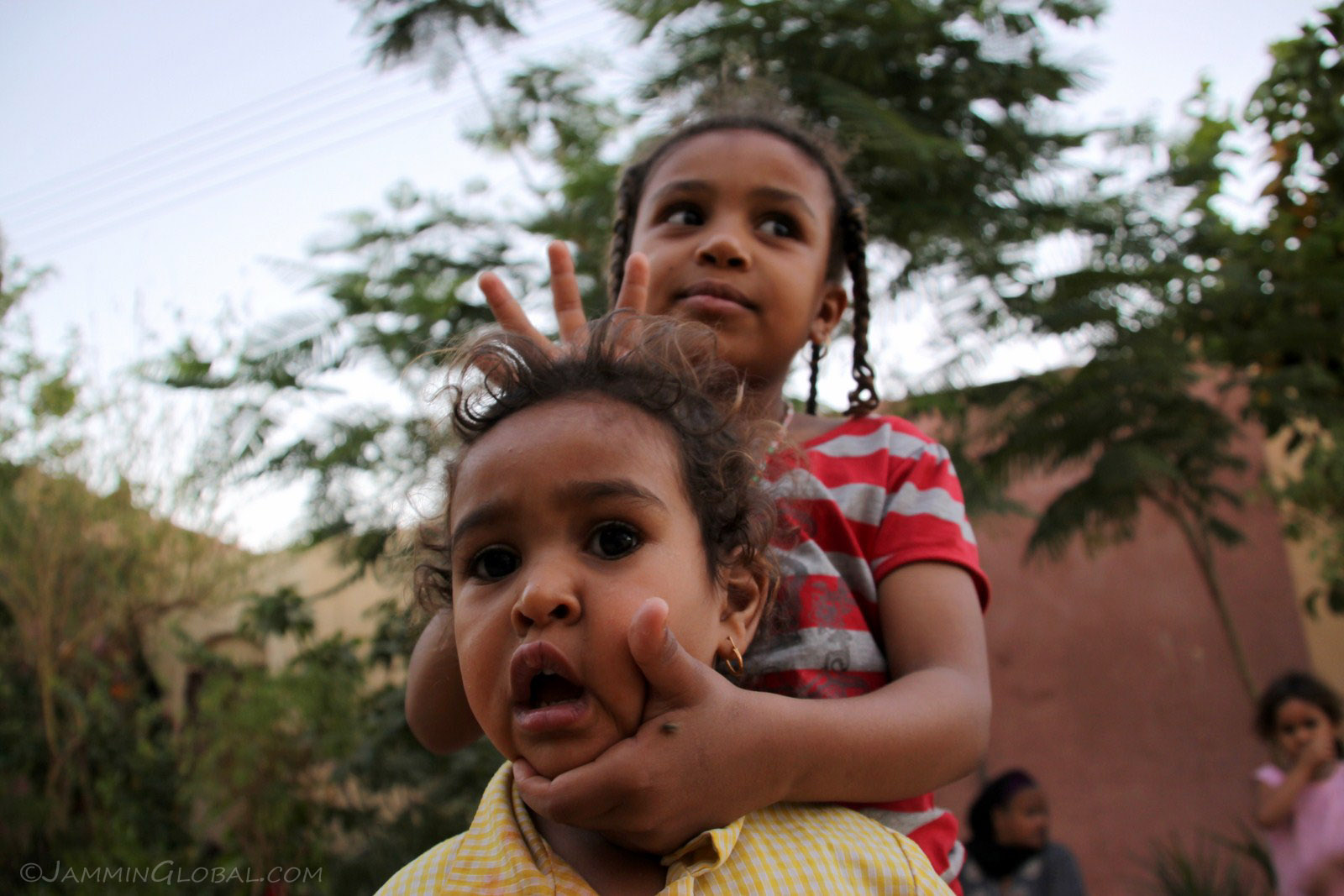
She got the hang of the photo shoot and manipulated her younger sister for the camera. Quite the bully...
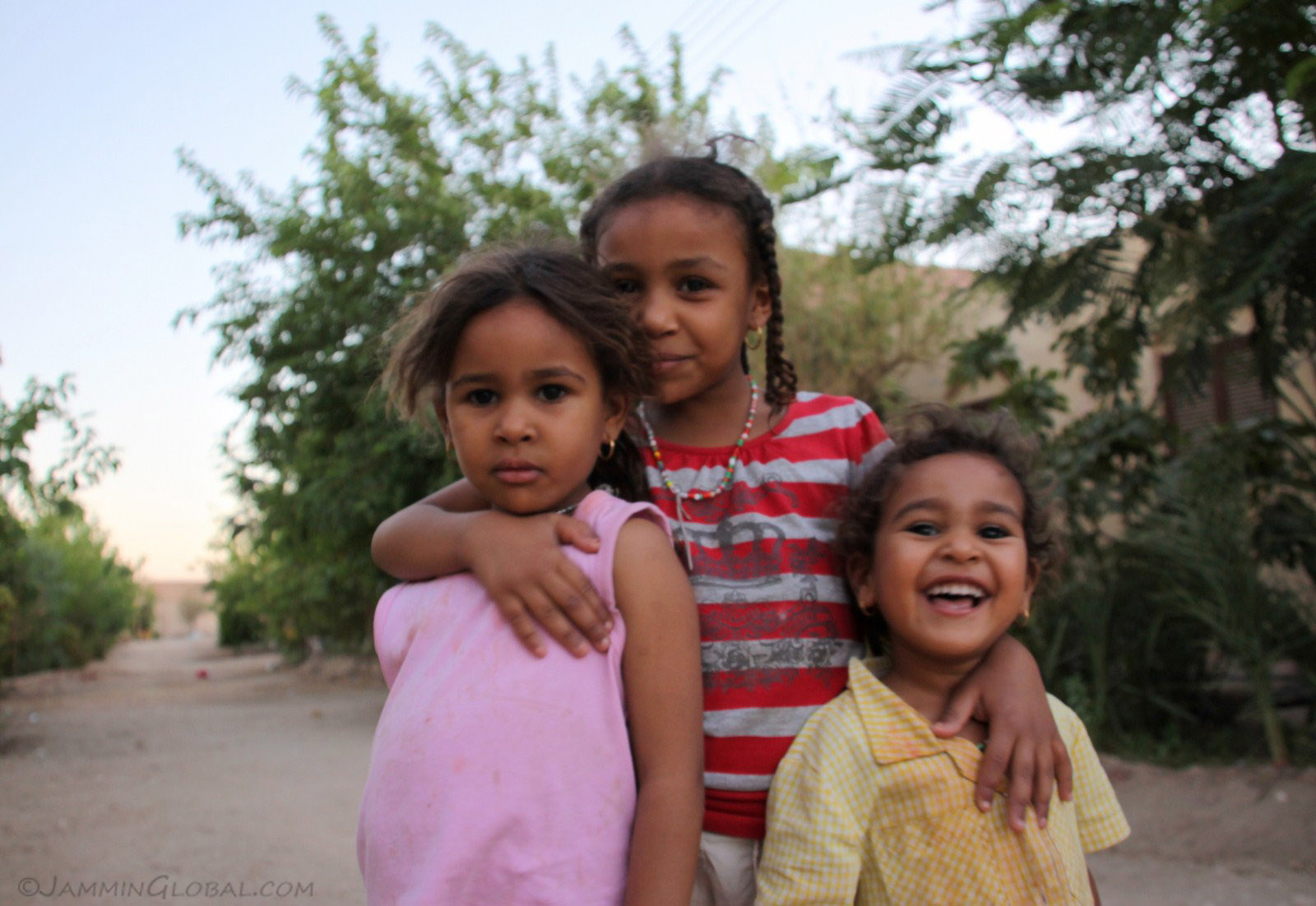
...but also a protective older sister. Perhaps that's a universal trait of older siblings: they'll fight you at home but protect you from outside forces.
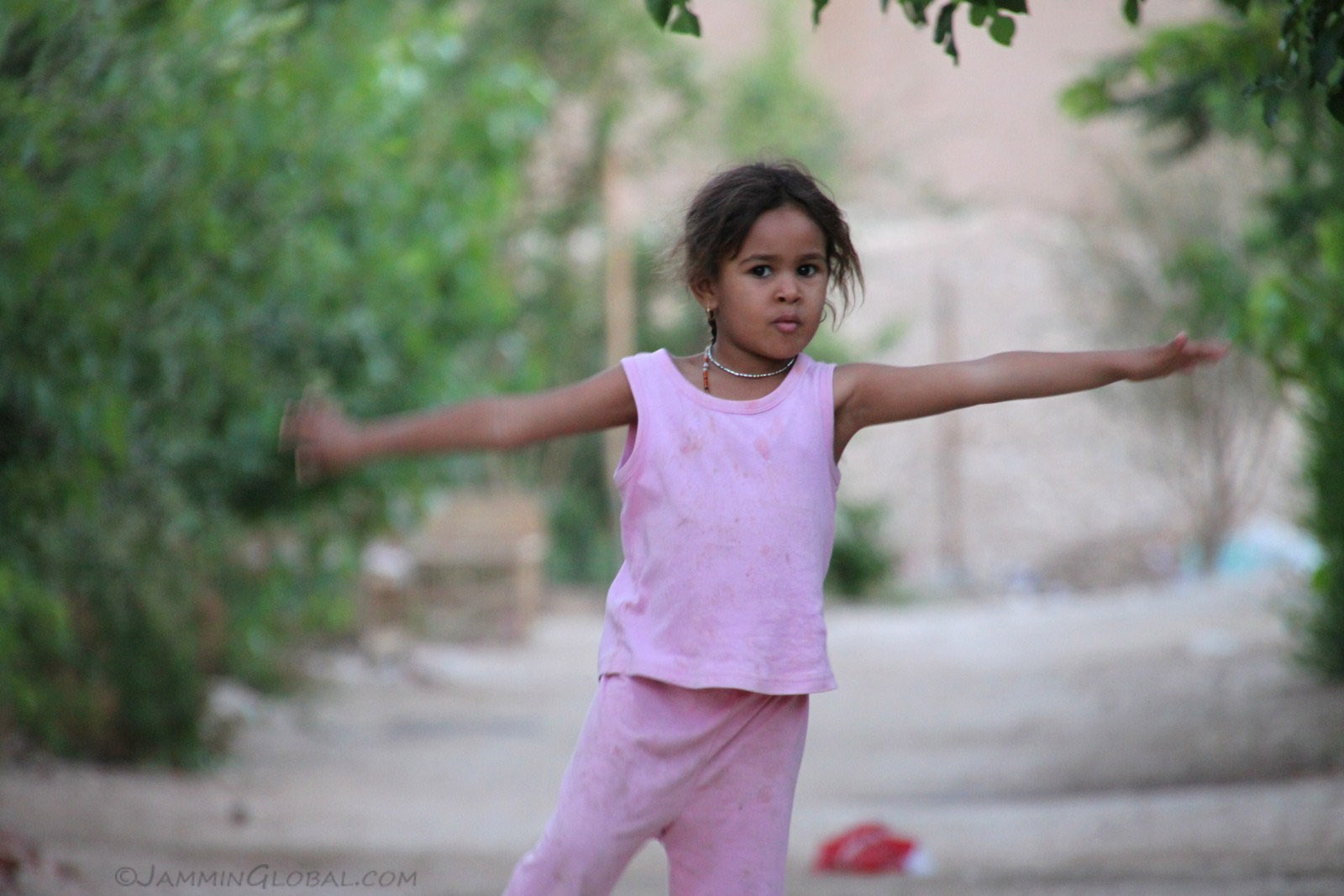
Fly like the wind.
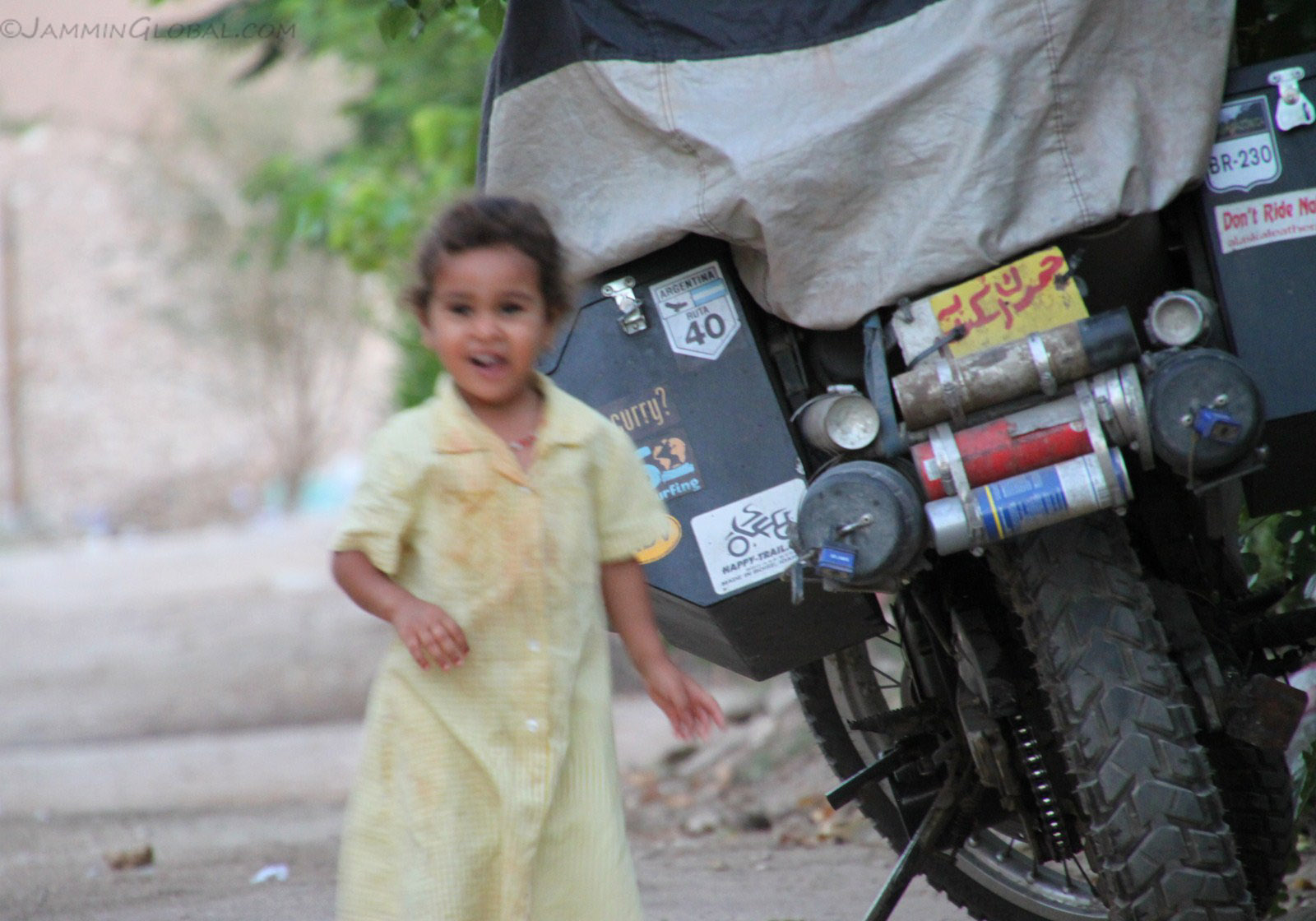
The aged, thirteen year-old sanDRina contrasted with the exuberance of Egyptian youth.
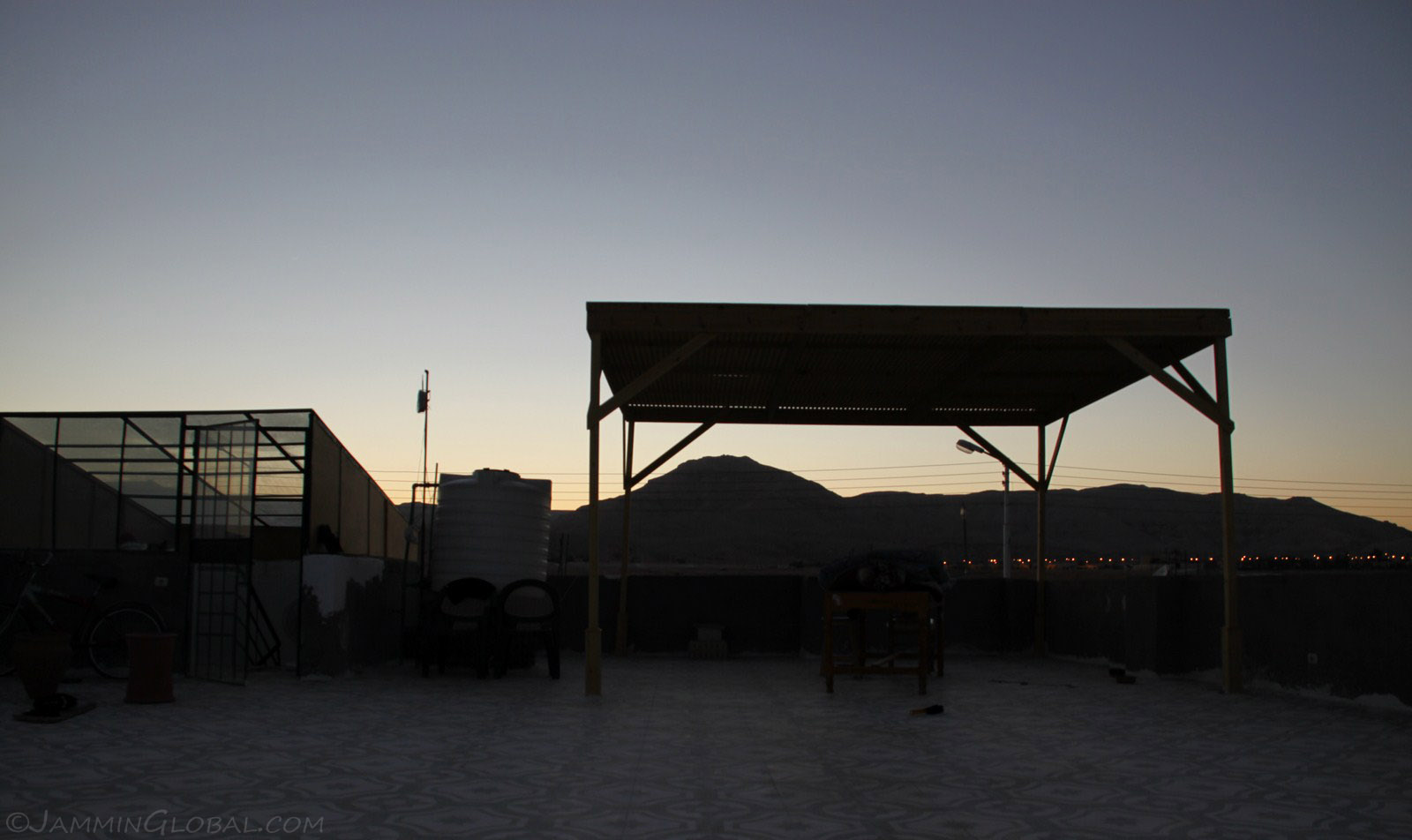
Ernesto had access to the terrace from his portion at the back of Mohammed and Fatima's house and we spent the evenings up here as it was very cool and windy after the Sun went down.
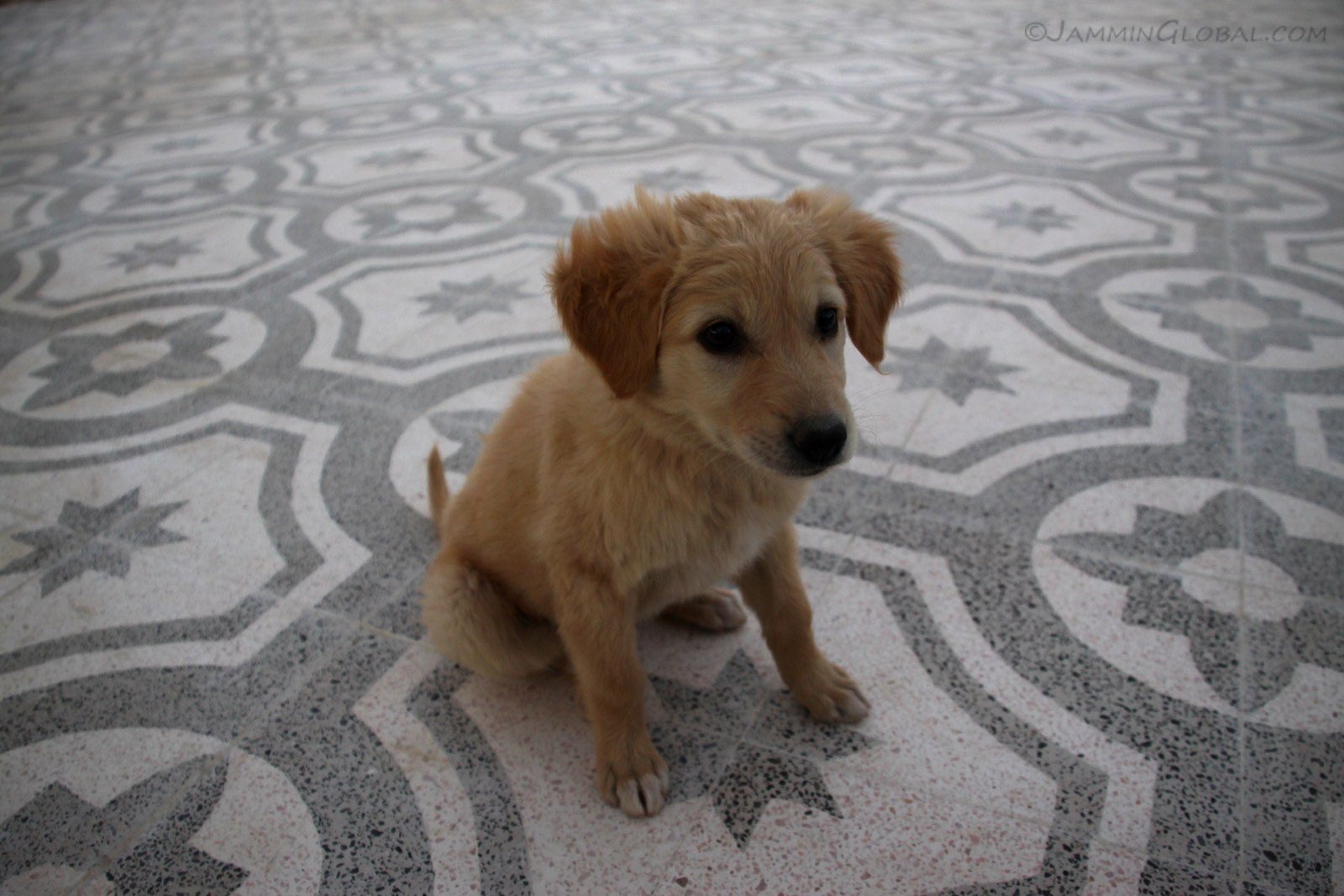
Being an animal-lover, Ernesto took in this abandoned puppy that had free range of the terrace. It was quite difficult to get this bubbly creature to sit still for a moment...
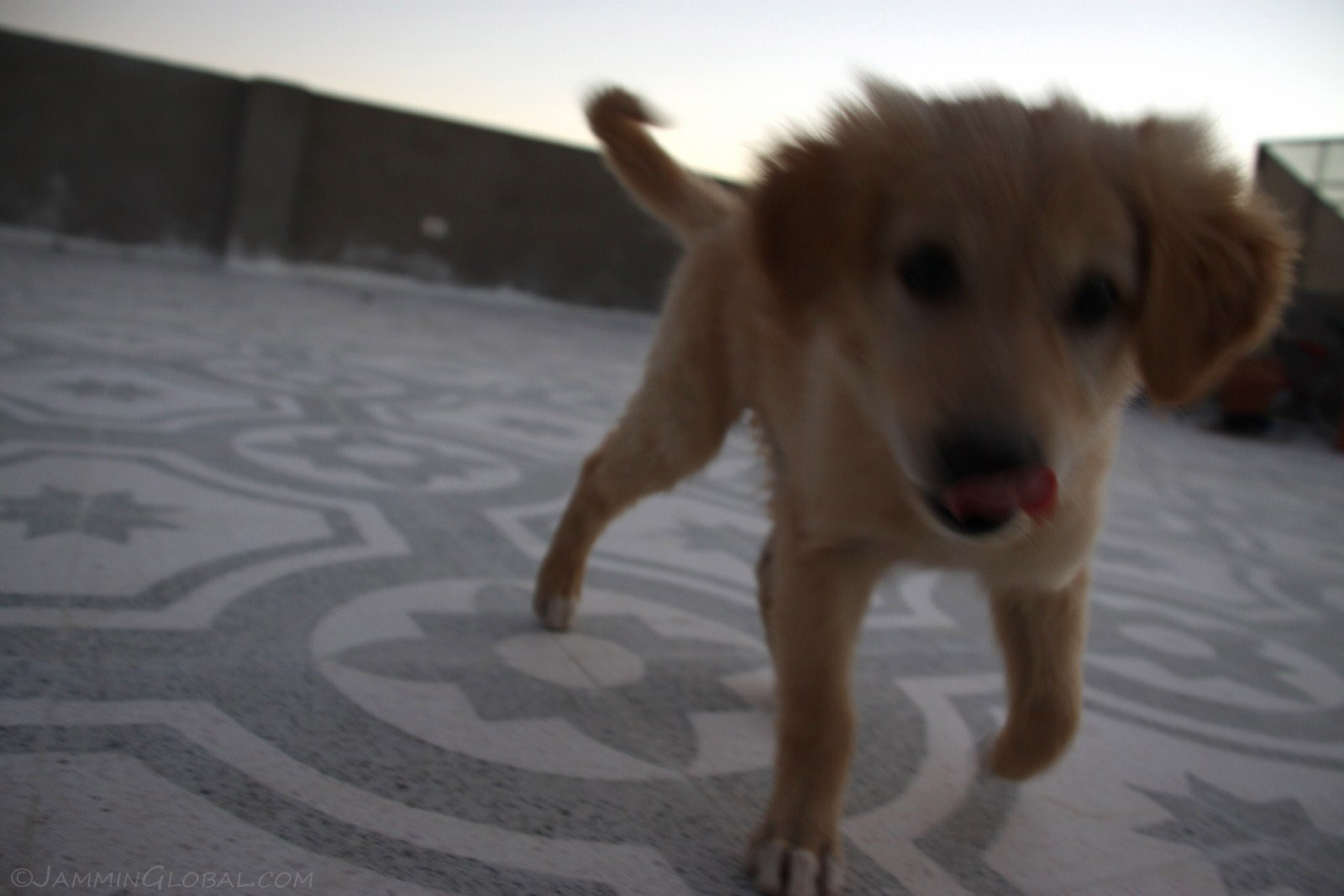
...because most of the time, it was like this. I spent a night sleeping on the terrace and after playing with the puppy and exhausting its energy, it laid down next to me for the night.
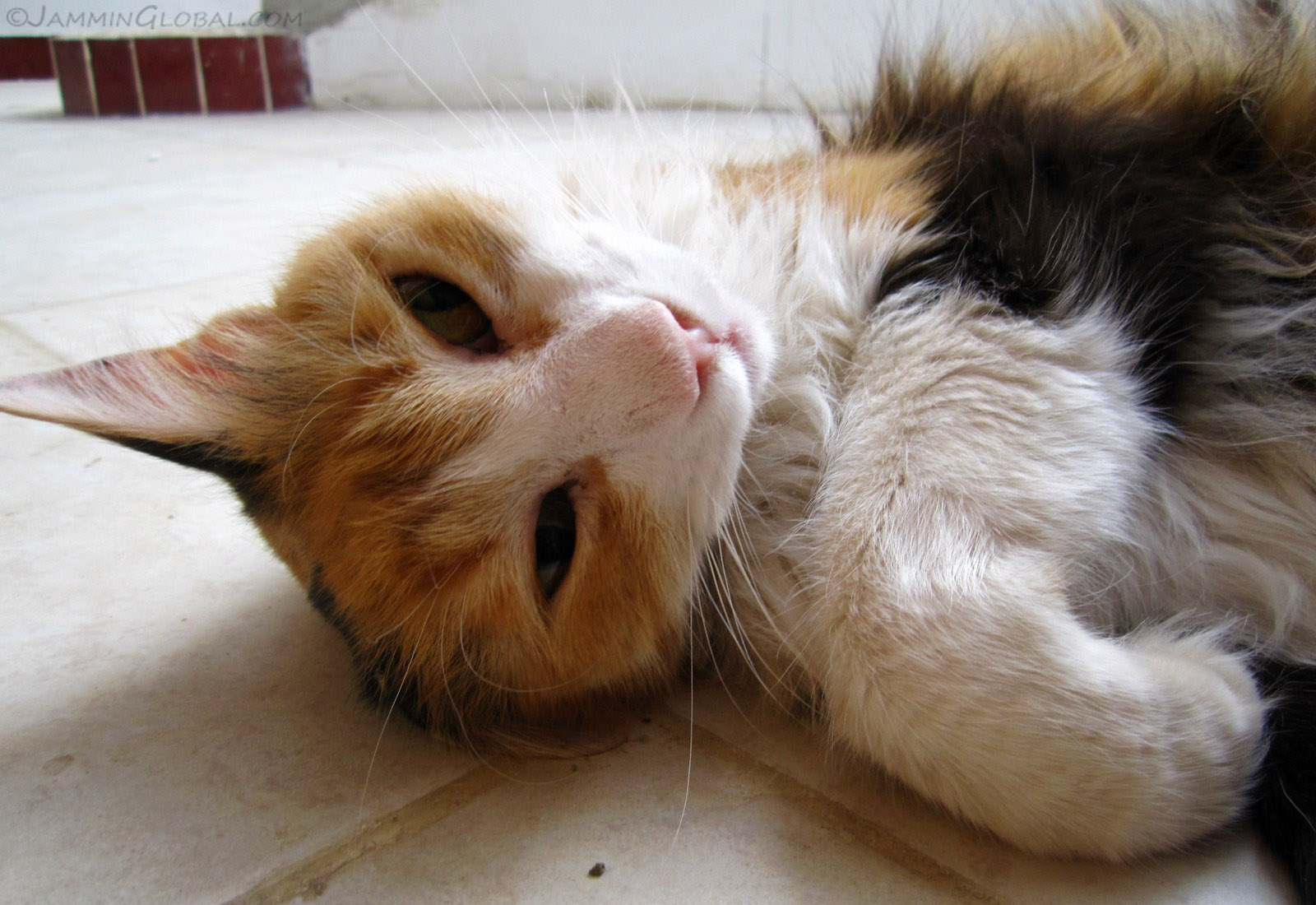
Ernesto's crazy thirteen year-old cat, Mimosa, that liked to sleep with its body contorted around the bathroom door.

Mohammed inviting us for lunch one day in his house designed by Hassan Fathy in the 1950s in the village of New Qurna.
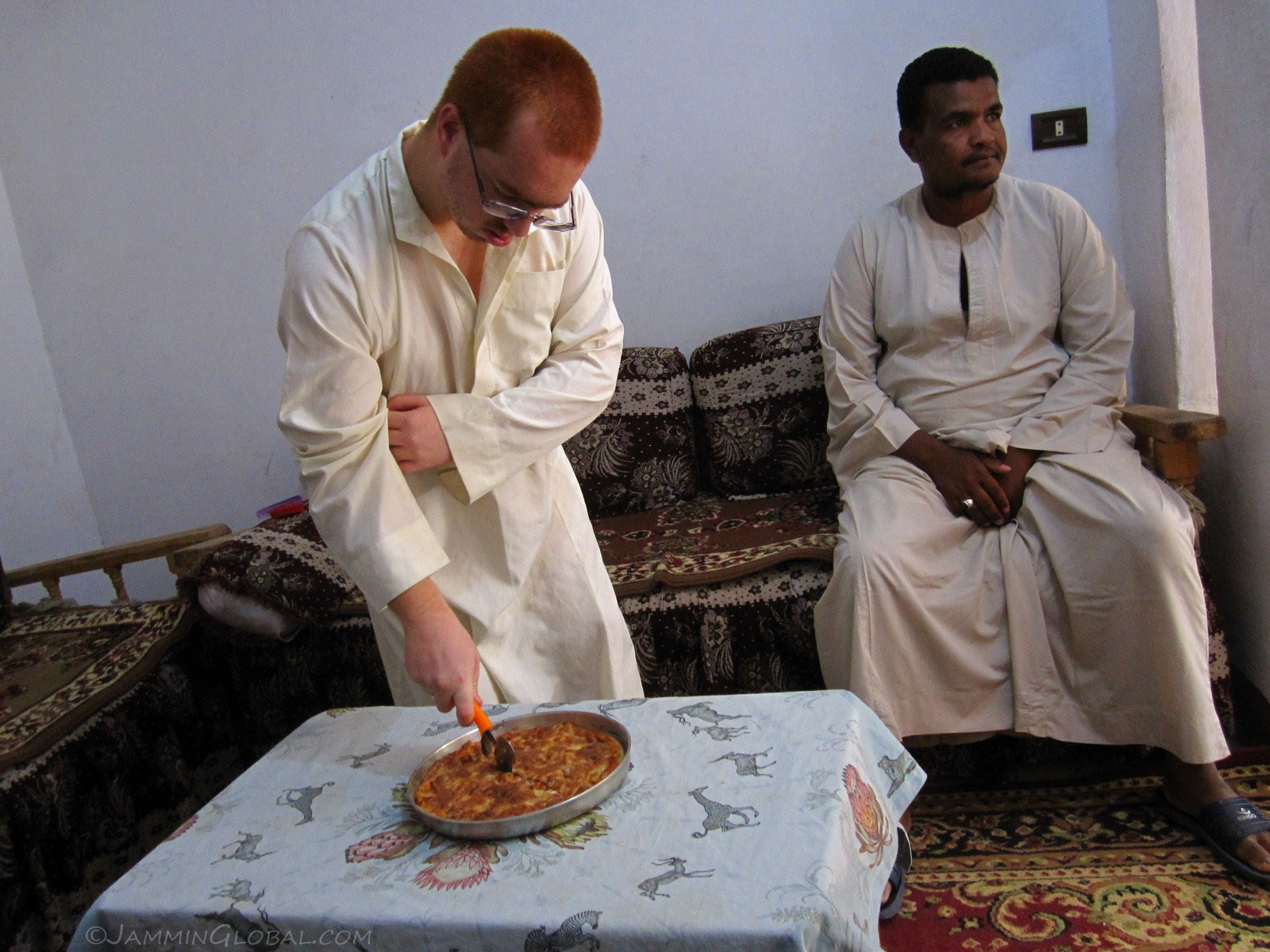
Ernesto taught Fatima how to bake pizza, an essential food for Argentines and Uruguayans. This here was an onion pizza.
This stay with my CouchSurfing host, Ernesto in Luxor, showed me facets of the city that I wouldn't have seen had I just stayed in a hotel. An interesting story of the past was possible through his adopted Egyptian family in New Qurna. And a current story of animal abuse and care was possible through his volunteering at Animal Care in Egypt. I'm grateful for these experiences that come with just going with the flow.
The tourist attractions of Luxor coming up next...
Next: Egypt, Part 13: The Magnificent Egyptology of Ancient Luxor
Previous: Egypt, Part 11: The Oasis of Kharga and Roman Ruins